Beautification Day on





and





MONDAY,
24, 2022, 7:30PM











MONDAY,
24, 2022, 7:30PM
Founded in 1946 and hailed by the Boston Globe as “the most important American quartet in history,” the Juilliard String Quartet—celebrating its 75th Anniversary this season— continues to inspire audiences around the world. Ronald Copes, former faculty member in UCSB’s Department of Music, has played with the Juilliard String Quartet since 1997. In May 2022, the Quartet named violist Molly Carr to its ensemble.
Members of the Juilliard String Quartet will offer a MASTER CLASS to string students in the Department of Music at UC Santa Barbara on SUNDAY, OCTOBER 23, 2022, KARL GEIRINGER HALL, 2:00PM

Exclusive Sponsor: Bitsy & Denny Bacon
Lobero Theatre Box Office ⫽ (805) 963-0761 ⫽ lobero.org
Sustainable Montecito – Conversations with members of the Montecito Association and the community on building sustainability into the town’s future




Village Beat – Updates on short-term rentals from the latest MA meeting with a date announcement on the next roundabout hearing
Society Invites – A candid chat with Rona Barrett before her foundation’s fundraiser at Sunstone Winery
Your Westmont – Downtown talk examines the mental side of sports and top MLK Scholar Clayborne Carson to speak at luncheon

Just Married – The matrimony and celebrations of Eva Violet Van Prooyen and Kenneth Paul Kahn


Hot Topics – It’s Fire Prevention Month and the Fire Safe Council is preparing to host a Wildfire Preparedness Exposition
Montecito Miscellany – Possible Pierre Lafond lessee, the Table of Life and Golden galas, the Mystic Whaler arrives, plus more miscellany
Community Voices – SeaWell intends to set out to the Pacific Ocean to solve our water woes



Letters to the Editor – Lesser-known traits of Lady Leslie, a note on Flumes, the law of AB2147, and other input
Guide


Our Town – Africa at the zoo, a tour of the Ojai Studio Artists, U.S. Elevator in town, and St. Vincent’s 21st Golf Classic
Local News – A call for volunteers, sponsors, and participants in this year’s Beautification Day
The Optimist Daily – The power of party is reducing energy use in one Glasgow club
In Passing – Remembering the impactful life of Gerald Wayne (Jerry) Fronterhouse Montecito Reads – Tensions and questions are beginning to arise between Cyrus and Hollis
Dear Montecito – The WELL is offering holistic health and wellness workshops, group counseling, and more to SBCC students
On Entertainment – Carmina Burana opens, Lobero Chamber Project is back, The Play That Goes Wrong, the Lincolns are in town, and more
The Giving List – STESA is teaching students and youth about sexual assault and consent
Calendar of Events – Ghosts in the park, seafood in the harbor, and Cats on the stage, along with other events
Brilliant Thoughts – The things that move us and other ideas about mobility Robert’s Big Questions – A trip to Madagascar leaves Robert with some lessons
Classifieds – Our own “Craigslist” of classified ads, in which sellers offer everything from summer rentals to estate sales
Meta Crossword Puzzles


Entering the Santa Barbara Club this summer, I met with the newly elect ed Montecito Association member, Stan Roden – a former Santa Barbara County District Attorney now working as a climate ambassador and filmmaker. Having heard of his interest in guiding the community towards more sustainable and resilient practices, especially amidst the ever-growing environment turmoil, I wanted to meet with him and hear his thoughts on what that entails.
One idea that Roden has been float ing around – with the goal of more sig nificant climate adaptation and emis sions reduction – is the prospect of amending the Montecito Association charter with language that references community sustainability, adding to its longtime singular focus of preserving Montecito’s semi-rural character. By highlighting Montecito’s goal to be pre served as a ‘sustainable, semi-rural’ vil lage, he believes it would bring climate responsibility to the front-of-mind in all their efforts.
Roden opened our conversation by ask ing me how it is I’ve come to Montecito. A fair place to start. I’m not from Montecito, and I’ve never spent much time here until this summer when I started working for the Montecito Journal. I grew up in Los Angeles and when I’m not away at univer sity, I still call the city home.
I explained that I came to work for the Montecito Journal because I saw an opportunity to share my voice through a smaller paper in a locale with a deep history of environmental action. When the MJ asked me what I wanted to write about, I could not have been clearer. As a young person planning to one day have a family of my own, and one that is hopefully integrated into a healthy, thriving community, I think a lot about local resilience. Whether through exploring alternative approach es to landscaping or coastal preservation – that’s what I wanted to write about –and what better place to do that than a town credited with the birthplace of the environmental movement.
I started our meeting by asking the question that sparked it in the first place, and really this whole discussion: “What do you think a sustainable Montecito looks like?” A simple enough question, I thought. But my conversation with Stan as well as several other community lead ers has proven me wrong.
Roden answered my question by first addressing sustainability on a global scale; how does Montecito’s community
contribute to the larger problem? “We’re at 418 [parts per million (ppm) of atmo spheric carbon dioxide],” he says. “We’re going to be over 700 by the end of the century.” For context, the atmosphere contained 280 ppm before the Industrial Revolution. While our planet has seen carbon dioxide levels this high in its his tory, it has never seen a rate of increase as fast as we are seeing today.
“So, whether you’re a skier or you drink wine or beer, whatever it is, you’re facing serious problems. That brings us back to Montecito,” says Roden. “This pristine place with acres and acres of beautiful lawns and all the water it takes to support them, that’s not sustainable.” Using 255 gallons of water per capita per day according to the Montecito Water District, Montecito consumes more water per person than almost anywhere in the country. And while on the surface it appears that even that level is a decrease from prior figures, the numbers don’t tell the full story.
I reached out to Sharon Byrne , Executive Director of the Montecito Association, and asked her the same lead ing question. Byrne’s answer may well be informed by her having lived through 2018’s disastrous debris flow.
“There are people that are putting in backup batteries and solar panels,” she says. “They’re almost being driven to it because we live in this world of public safety and power shutoffs.” Byrne has been community organizing in the Santa Barbara area since 2010 and has a history of actively working to cultivate change. Her work on the social revi talization of restaurants along Milpas was awarded in both 2013 and 2014 by Neighborhoods, USA.
To Byrne, creating resilience in the face of our changing climate is the answer to sustainability. With the blame for multiple recent fires falling in part on Southern California Edison (SCE) and Pacific Gas and Electric (PG&E), they have begun shutting down power, often a day or two in advance of a looming fire threat. “People have start ed thinking, if the grid is unstable, maybe now’s a good time for me to investigate a solar setup,” says Byrne. “Having to deal with resilience prob lems starts pushing you in more sus tainable directions, whether you want ed to go there or not.”
“I believe Montecito is living on
The issue of short-term rentals (STRs) in the Coastal Zone could be back in front of County lawmak ers as soon as next year, reports Darcel Elliott with First District Supervisor Das Williams’ office, who spoke at the Montecito Association Board of Directors meeting earlier this week.
STRs continue to be unregulated in the Coastal Zone, after the California Coastal Commission in 2018 rejected Santa Barbara County’s proposed ordi nance language that would allow for STRs only in a small beach district of Montecito, an area that has a historic use of vacation rentals.
In 2017, the County Board of Supervisors adopted ordinances that prohibit STRs in inland resi dential zones, with the exception of “homestays.” A homestay is a shortterm tenancy in which an owner or long-term tenant of six months or more is on the property at the same time as the short-term tenants. Homestays require a permit, and are subject to
several regulations. The homestay can not exceed three bedrooms; a per son can only apply for one homestay license; homestays must have nuisance response plans; and there are rules regarding parking, noise, occupancy, and more.

According to Errin Briggs with the County, who is on the team of people who respond to complaints about STRs, Accessory Dwelling Units (ADUs) are not allowed to be rented short term, but the homestay laws allow for owners or long-term tenants to live in the ADU, and rent out the main residence (as long as the number of bedrooms being rented does not exceed three). The homestay portion of the ordinance language was in direct response to community members who voiced concern over not being able to supplement their income with shortterm rental income. The thought is that if a homeowner or long-term tenant is nearby on the property, the chance of disruptive parties and events happening is greatly decreased.
Briggs said illegal STRs are investigat ed on a complaint-based system, with County staff having access to a special
software that tracks online listings across all STR third-party websites such as Airbnb and VRBO. “We do not actively go out looking for problems, but we do follow up on complaints pretty quickly,” he said, adding that the number of com plaints about STRs has decreased dramat ically since 2018. Once it is determined that a property owner is hosting an STR illegally, a Notice of Violation is sent with instructions to cease the activity within 30 days. If the activity continues, fines begin at $1,500 for the first month, and then escalate to $3,000 for the second month, $6,000 for the third month, etc., all the way to $15,000. “Our goal is to gain compliance; we’re not out there trying to be punitive. When necessary, we are not shy about using the fine and escalating it in order to gain compliance,” Briggs.
Elliott said the issue of STRs in the Coastal Zone has been on the County’s long-range work plan for years, and is expected to be back for discussion next year.
Neighbors affected by a suspected illegal STR in the inland zone can sub mit a zoning violation. More info can be found here: countyofsb.org/1053/ File-a-Building-Zoning-Complaint.
During community reports at this week’s MA meeting, Montecito Union
School’s Anthony Ranii said the school’s largest fundraiser, the MUS Carnival, is slated for October 22. The fundraiser for the MUS Foundation raises funds to enhance the school’s academic, athletic, and arts programs; enrich the student experience with technology, curriculum, and improved classroom resources; and elevate teach ers through professional development and continuing education. Ranii also reported that the $14M project cur rently underway on campus to address infrastructure issues is currently on schedule and on budget.
Montecito Fire Chief Kevin Taylor reported that the fall season is the time for highest fire risk on the South Coast, and asked that residents be vig ilant about wildfire safety. This week end is the Santa Barbara County Fire Safe Council’s Wildfire Preparedness Exposition at Direct Relief in Goleta. The event will feature free pizza, speak ers, exhibits, and activities to learn about living in wildfire-threatened communities. Visit sbfiresafecouncil. org and see page 40 in this issue to learn more.
Montecito Water District’s Nick Turner reiterated a message we report ed last week: MWD customers need to reduce their water usage, and need to do it now. Usage continues to be


Montecito’s Pierre Lafond Wine Bistro restaurant, which has been closed since the pandemic, is having a new lease on life.

The Charter Oak Restaurant in St. Helena in the heart of the Napa Valley run by chef Christopher Kostow, also of the Michelin 3-starred The Restaurant at Meadowood (TRAM), has just allegedly signed a lease on the property, formerly the site of Piatti for 22 years, I can exclu sively reveal.
TRAM, as Kostow’s eatery was known, burned down in September 2020 in the Glass Fire, which destroyed at least seven wineries and burned more than 36,236 acres.
On its website Kostow says Charter Oak “is centered on a celebratory, fam ily-style dining experience with sim ple, approachable, and seasonal food –grilled meats, beautiful vegetables from our 3.5-acre farm, local wines, and unparalleled cocktails.”
Welcome to the ‘hood...
The Food Bank of Santa Barbara County hosted its annual Table of Life gala at the picturesque Montecito estate of Steve and Cindy Leonard, a short distance from Westmont College.



More than 130 guests helped raise around $500,000 towards the $16.5 mil lion cost of a new 57,000-square-foot
warehouse and offices, or Sharehouse, near Deckers in Goleta, the former home of the Nexus Haircare Center, which the organization will be moving into next year from its current leased property.
“It will enable us to dramatically expand our capacity to bring in more fresh pro duce – another 32,000 pounds every week,” says CEO Erik Talkin. “It will also enable us to store more food, readyat-hand, in case there is a major disaster.”
Erik says new funds will pay to modify the facility, building a new cooler and freezer, outfitting the volunteer space and Nutrition Promotion Center, and mak ing sure the facility meets all safety and technological standards.
The sunset soirée, emceed by ubiq uitous KEYT-TV journalist John Palminteri, also paid tribute to visionary philanthropist Patricia Bragg and the LaCentra-Sumerlin Foundation.
Emcee John Palminteri, Scott Zegar, David Jackson, and Judi Weisbart (photo by Priscilla)
Among the supporters noshing on the Duo Catering fare and enjoying the music of the Summerland Trio were Janet Garufis, George Leis, Christine Emmons, Lynn Kirst, Judi Weisbart,








Visit our 12,000 square foot showroom and find everything you need whether you are simply looking for a replacement umbrella, a new dining set or a completely new outdoor environment. We will help you navigate the process and create your dream outdoor living space—all at significant savings during our End of Season Red Tag Sale. Hayward’s has the largest selection of outdoor furniture between Los Angeles and San Francisco — ready for immediate delivery.

We knew Lady Leslie RidleyTree as the “Philanthropist of Santa Barbara.” As we lay her to rest, her presence in our city will continue as we pass by the many buildings and plaques that carry her name: The Ridley-Tree Cancer Center at Sansum Clinic; the Ridley-Tree Education Center at the Santa Barbara Museum of Art; the Westmont RidleyTree Museum of Art. It is not hyperbo le to say that if Lady Ridley-Tree’s name was attached to a charitable event, it leveraged additional significant contri butions. She became a symbol of giving for the city and, for many, she set an example about how to give. She began to define philanthropy the way that brands come to identify the thing – to “Google” means to search or to “Xerox” is to copy.
In a way, the city thrived with her. And in a way, her legend expanded beyond herself.
And yet, in the quiet moments, there was also the real Leslie. A tremendous and complex woman whose big life no single person knew in its complete picture.
It is in this vein that her family and friends will remember her.
Here is what you can’t Google about Lady Leslie Ridley-Tree, but what those who loved her closely knew and wanted to share:
– favorite painting was a valueless 4”x4” still life that was passed down in her family by her Aunt Rovena – read her prayer book every morning – took her grandson to his first Star Wars movie – loved Paul (her husband) until her
last breath
– drove across the country several times living out of a blue VW microbus
– always carried a handkerchief in her purse
– saved every Thank-You letter written by student recipients of her scholarship – could cut you to the quick with one word
– Covid, she gave money to every staff member at Cottage Hospital to show support for their efforts
– never wrote a single speech and always spoke off the cuff – hoped to inspire the best in everyone around her
We will miss our Leslie and celebrate her life on October 29 at 2:30 pm at All Saints-by-the-Sea Episcopal Church. Space is very limited. Livestream will be provided. No flowers. Please send donations to your favorite charity in her memory.
From the Family of Lady Leslie Ridley-Tree
Montecito Water District uses Badger E-Series water meters with no moving parts. The Badger E-Series meter is an easy meter to read. You just cover the optical switch for a second or two and it will begin to give you a flow readout on the display. Flume only works with meters with moving parts and last time I looked it was incompatible with Flume. Flume itself is only telling you what your meter is already registering. Flume is redun dant with Badger E-series meters, the only benefit to Flume is the app and,
in my view, people using the app often mistake Flume for a leak detector.
It is not. It simply measures flow as does the Badger E. Neither Badger or Flume can pinpoint the spot on your property where the problem is.
Water flow could be a running toilet, a dripping garden faucet or a swimming pool auto fill, etc.

Most people in Montecito have gar deners. Most gardeners can be taught how to read a Badger E meter and how to figure out if the water flow is inside the home or in the garden (monteci towater.com/doc/6279).
One thing Montecito Water should do is print this in Spanish. Maybe they already have.
Steve GowlerAB 2147 states officers should not stop and cite a crossing pedestrian. Jaywalking is implied. Now for the rest of law.
“Unless a reasonably careful person would realize there is an immediate dan ger of a collision with a moving vehicle or other device by human power” (such as a bicycle).
I think that is clear.
Whatever could go wrong?
Steven Marko
The evidence is indisputable: Excessive COVID school closures, mandates, and protocols caused signif icant harm and learning loss on Santa Barbara’s youth. Now more than ever, it is imperative that we elect school board trustee members who under stand that educating our children is job number 1. We need trustees who will represent parents and students and who will lead without loyalties to established political parties. It is time to focus on educational outcomes and give our youth the opportunities they deserve for the future. Please vote for
Day
Thurs, Oct 13 12:33 AM 3.8 5:20 AM 2.4 11:41 AM 5.6 06:58 PM 0.5
Fri, Oct 14 1:39 AM 3.3 5:37 AM 2.9 12:10 PM 5.2 07:58 PM 0.8
Sat, Oct 15 12:46 PM 4.8 09:20 PM 1.0
Sun, Oct 16 01:45 PM 4.4 010:53 PM 1.0
Mon, Oct 17 7:51 AM 3.8 10:40 AM 4.0 03:41 PM 4.2
Tues, Oct 18 12:01 AM 0.9 7:45 AM 4.0 12:18 PM 3.5 05:22 PM 4.2
Weds, Oct 19 12:47 AM 0.7 7:55 AM 4.2 01:01 PM 3.0 06:26 PM 4.5
Thurs, Oct 20 1:22 AM 0.5 8:09 AM 4.5 01:35 PM 2.4 07:13 PM 4.7
Fri, Oct 21 1:50 AM 0.5 8:24 AM 4.8 02:06 PM 1.9 07:54 PM 4.9
the following candidates:
Santa Barbara Unified School District, Area 1: Dan La Berge or Efigenia Banales
Santa Barbara Unified School District, Area 4: Phebe Mansur
Santa Barbara County Board of Education Area 1: Rosanne Crawford
Santa Barbara City College Area 1: Debi Stoker
Santa Barbara City College Area 5: Sharon Salvador-Jegottka
Cori Hayman
With each election we see many flashy, high-gloss flyers in the mail supporting one or another candidate or measure. This year we see the same misrepresenta tion by the No on Measure T group. Do you believe them? Almost every state ment they make contradicts the City’s
newspaper
Executive Editor/CEO | Gwyn Lurie gwyn@montecitojournal.net
President/COO | Timothy Lennon Buckley tim@montecitojournal.net
VP, Sales & Marketing | Leanne Wood leanne@montecitojournal.net Managing Editor | Zach Rosen zach@montecitojournal.net Art/Production Director | Trent Watanabe
Account Managers | Sue Brooks, Tanis Nelson, Elizabeth Nadel, Bryce Eller Office Manager | Jessikah Moran
Graphic Design/Layout | Stevie Acuña
Contributing Editor | Kelly Mahan Herrick Copy Editor | Lily Buckley Harbin Proofreading | Helen Buckley Arts and Entertainment | Steven Libowitz
Contributors | Scott Craig, Ashleigh Brilliant, Kim Crail, Tom Farr, Chuck Graham, Stella Haffner, Mark Ashton Hunt, Dalina Michaels, Sharon Byrne, Robert Bernstein, Christina Favuzzi, Leslie Zemeckis, Sigrid Toye
Gossip | Richard Mineards
History | Hattie Beresford Humor | Ernie Witham
Society – Our Town | Jonanne A. Calitri Travel | Jerry Dunn, Leslie Westbrook Food & Wine | Claudia Schou, Gabe Saglie
Published by: Montecito Journal Media Group, LLC Montecito Journal is compiled, compounded, calibrated, cogitated over, and coughed up every Wednesday by an exacting agglomeration of excitable (and often exemplary) expert edifiers at 1206 Coast Village Circle, Suite G, Montecito, CA 93108.
How to reach us: (805) 565-1860; FAX: (805) 969-6654; Montecito Journal, 1206 Coast Village Circle, Suite G, Montecito, CA 93108;
EMAIL: tim@montecitojournal.net
That report was presented
the Carpinteria City Council,




Legal language is confusing and I am quoting from those documents and placing more familiar language in “peo ple speak.”











For example, “City staff interprets that the addition of ‘existing parking’ to the OSR (Open Space Recreation) Land Use category definition does not by itself preclude ‘new parking’ on OSR designated parcels within the City.” (Page 10, paragraph 3.) In other words, parking is allowed.
Another example from the No cam paign: Measure T will lead to “High density multi-family residential develop ment of Parking Lot 3.” Whereas the City wrote, “While Measure T2022 would continue that residential overlay, per state law, the density allowable follows the underlaying density and the only housing allowed on REC (Recreational) zone is a caretaker’s dwelling on Parking Lot #3.” (9212 Report, page 11, paragraph 3.) So, there will be NO high-density residential development there.
The City attorney stated that “no other OSR (Open Space Recreation) parcels in the City have this (residential) overlay.” So why are there so many misrepresenta tions or false statements made by the No folks? They seem to be using scare tactics and intimidation.


What does YES on Measure T2022 do? It stops commercial development of public land, i.e. the hotel, on parking lot 3. Public land owned by Carpinterians will be safe from private developers. It maintains the Carpinteria we all love –the last small-beach town in Southern California.
Vote YES on Measure T. Amrita M. Salm

To read Mr. Hazard’s Op Ed, “California Scheming: Fast Food Folly Unfrocked,” the unions caused gas price increase, homelessness, increasing crime rate, sky high home prices, and utilities. Historically, Unions gave us better wages, workplace safety, social security and pensions plans, health care through work, child labor laws, 40-hour week, overtime pay, unem ployment insurance, minimum wage, etc. None of that was given volun tarily by businesses and corporations. A few years ago, there was news that big corporations were advising their low-paid employees how to apply for government sponsored health insurance and food stamps. To this day, we subsi dize a lot of businesses with low wages through programs like earned income tax credit, food stamps, Section 8 hous ing, and governmental health insur ance. Some political leaders believe that if a business cannot pay decent wages, maybe they should not be in business. What do you think?



Mr. Smith has been writing virtually the same letter about every Democratic president since Bill Clinton. Only the names and the laundry list of com plaints have changed. This reminds me of a scene from the book Animal Farm by George Orwell. The animals stage a rebellion and chase the humans off the farm. They learn to chant, “Four legs good, two legs bad.” Mr. Smith’s letters are the equivalent of Republicans good, Democrats bad. He laughingly claims the high ground of tolerance by saying he wanted Biden to do well, but after allegedly wrestling with his conscience for almost two years, has come to the conclusion “that Biden is a complete disaster as our president.” His letters con demning President Biden, which began a few short months into his term, tell a very different story.
In regards to the tired old trope that we were “energy independent” during Trump’s administration, Mr. Smith con veniently fails to define that term. If it means we don’t import oil from undem ocratic (and sometimes hostile) countries, that hasn’t been true since the 1940s. If it means we are producing more than we consume, that became true in 2020 primarily as a result of the COVID-19 pandemic and not because of anything Trump did (Forbes, Oct. 1, 2022).
Inflation is a world-wide problem. More can and should be done to find a solution and President Biden will rightfully take the heat if it isn’t. But, President Biden did not cause the problem. The inflation rates for Mexico, Brazil, Italy, Spain, the United Kingdom, and Germany are all between 8% and 10%. Is Biden solely responsi ble for those rates as well?
Trump’s negotiated agreement (i.e. capitulation) in Afghanistan allowed the Taliban to secure the provinces and move into Kabul more quickly than Biden or the DOD had predicted. Due to Trump’s poor negotiating skills and subsequent poor intelligence by Biden’s team, lives were tragically lost. But, President Biden got us out of Afghanistan... something none of his immediate predecessors were willing or able to do.
Trump’s policy “to secure our bor ders” consisted of 1) building a porous border wall that he said Mexico would pay for (they didn’t) and which could be breached by simple over-the-counter garden tools and 2) locking up adoles cents, toddlers, and infants (who had committed no crime) in what were cleverly referred to as “Tender Age Detention Centers.”
Can Mr. Smith ever write a letter composed of facts (rather than banal and easily rebutted generalities) without com plaining about the constraints of word limits? Time will tell.
Robert BaruchBarbara Design and Build was fabulous. Don and his crew were the BEST from day one. He was honest, timely,

artistic, patient
skilled. They understood
On honeymoon in March 2022 with his partner Patrick , pho tographer-musician Andrew Antone ’s safari journey turned into a project to bring awareness to the natural world and wildlife he encoun tered through his camera lens. After

pooling through 11,094 images, he selected 500 images for his book, and 32 photos for his exhibit at the Santa Barbara Zoo. His book sign ing and exhibit opening was held on October 6, with guests including Easter Moorman , Mindy Denson , Linda Antone , Nancy Abtey , Merryl Brown , Janet and Gary Gordon , Dr. Laurel Hansch , Dr. Bonnie Dattel ,
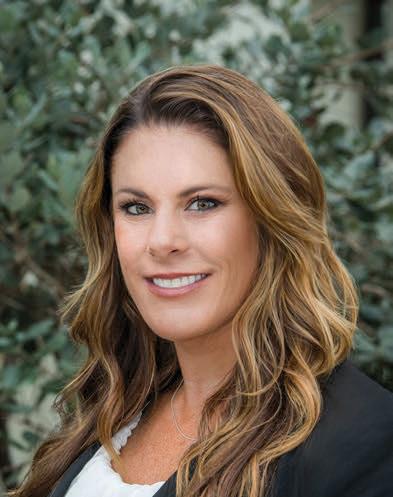
Antone said he hand held a Canon R5 camera and used three Canon lens es, a 15-70mm, 70-200mm, and 100500mm, and used no digital post-pro cessing except color correction. All photos were taken at national parks in Botswana and Tanzania, and in Kenya at the Sheldrick Wildlife Trust Preserve and the Giraffe Manor. I asked him what value-add this honeymoon safari photo op provided, and he shared, “The conservation and preservation of our Earth and its incredible animal kingdom should be a priority for all of its inhabitants. Having had the privi lege to experience the purity and beau
ty of Africa, my hope – through this book and exhibition – is to bring the beauty of Africa to those who aren’t able to experience it first-hand. Most importantly, I hope it inspires the prioritization of conservation efforts.”
Visit andrewantone.com for more information. The exhibit is on through January 2023.



The Ojai Studio Artists (OSA) had their annual tour with free ticketing – in the spirit of communities and art
Our Town Page 364
this brilliant estate to be greeted by the breathtaking ocean views which are seen from almost every room! An entertainer’s dream with an open floor plan and walls of glass that retract for ideal SB indoor/outdoor living! The primary suite, located on the main level, has a fireplace,

closet & spa-like bathroom.
lower level
tub,
en suite bedrooms
access the pool & gardens.

The days are getting shorter and cooler. Fog is drifting in, and it feels like spooky season is rolling in with it. Everyone is craving pumpkin spice, and dreams of the Great Pumpkin lighting up Halloween steal into our chil dren’s blissful sleep.
All of this can only mean one thing… Yes, it’s time for Beautification Day in Montecito!
If you didn’t know, or are new here, Beautification Day is a beloved commu nity tradition, held every year on the first Saturday after Halloween. On the morn ing of Saturday, November 5, this year’s Beautification Day, neighbors will gather in front of the Montecito Post Office. There they will don yellow Montecito safety vests, pick up equipment, share a breakfast pro vided by one of our amazing merchants, and then fan into the streets to pick up lit ter and tackle neighborhood beautification projects. Decades ago, when the tradition started, we handled a discarded Halloween candy wrapper issue. It’s morphed over the years into a large community gathering, with families participating, neighbors greet ing neighbors, and people wanting to put their hands on this community, with love. We have community tables where you can learn about organizations serving our com munity, like the Montecito Community Foundation, the Montecito Water District, and MERRAG.
Beautification Day also tackles much bigger projects now: trash pickups at the freeway ramps, abandoned camp clea nouts by the Hands Across Montecito team, and trail upkeep by the Bucket Brigade. It takes a lot of community heart to do all this, and the good news is that Montecitans are big-hearted people, espe cially when it comes to community.
Volunteers. We love families, kids, and company/nonprofit teams, so email info@montecitoassociation.org if you’re coming! You’ll receive a complimentary litter pick-up stick from the Montecito
Association as a thank you.
Breakfast – Montecito and Coast Village restaurants – we need YOU! Are you one of our delectable restaurants in Montecito or Coast Village? Would you be willing to provide breakfast for our volunteers? Here’s what’s in it for you: public Thank You’s in these pages and to our membership. The chance to meet up to 200 new customers, in one setting, have them taste your food, fall instantly in love with you, and become loyal customers for life. The chance to provide your menus and catering info right there, in the event. And of course, the chance to be a fêted Community Hero. How can you possibly resist?
If you want to sponsor Beautification Day, we welcome your contribution at montecitoassociation.org. You will be thanked right here on these pages, and in email newsletters to our membership! It truly takes a village, and we can’t do this without YOU!
When volunteers return from shining up the neighborhood, the Montecito Village Grocery is donating hot dogs for the lunch, and our Montecito fire fighters will be cooking them for you! Live music will be playing, and you get a chance to smile in the sun, enjoying your newly cleaned community, and catch up with your neighbors.
Montecito doesn’t always get fair treat ment in news media, especially locally (out side of these pages, of course). Media loves to pick on us for being the Land of Oprah and Ellen, of elites who prize water-wasting verdant lawns, and exclusive, gated estates. However, they completely miss the vibrant, community-minded, caring majority of neighbors in this community that MAKE Montecito this incredibly special com munity. On Beautification Day, Saturday, November 5, you’ll see a sea of yellow Montecito safety vests out there making this community shine. That’s the REAL Montecito, and we heartily invite you to be part of it, too!
Last year, a renowned dance club in Glasgow announced an innovative plan to gen erate energy using dancers’ body heat to heat and cool the club. Now the renowned venue SWG3 officially activated the revolutionary system, dubbed the BODYHEAT system in the past week.
SWG3 managing director Andrew Fleming-Brown said, “In addition to being a significant step toward achieving the clubs’ net zero targets, this action “will hopefully influence others in our industry and beyond to follow suit, working together to tackle climate change.” Clubgoers were invited to take part in the Slosh, a line dance, to officially launch the new system. Energy Live News and BBC News state the following in regard to how the BODYHEAT system functions:
– The dancers’ body heat is transferred by a carrier fluid to 12 boreholes that are 200 meters (about 656 feet) below the earth and powered by a thermal battery.

– Heat pumps are then supplied with the energy.

– The club is heated or cooled by the heat pumps, which convert energy to the desired temperature.
“When you start dancing, medium pace, to the Rolling Stones or something, you might be generating 250 watts,” system designer and TownRock Energy founder David Townsend told BBC News. However, he adds that if you have a popular DJ who gets everyone up and moving, the system could be producing 500-600 watts of thermal energy.
With the new system, the club will be able to completely turn off all of its gas boilers and reduce its annual carbon dioxide emissions by 70 tonnes.
According to the SWG3 website, this would effectively cut its 138.5 tonnes of car bon dioxide emissions per year in half. By 2025, the venue plans to achieve carbon neutrality. The club has also made other efforts in this direction, such as moving to 100 percent renewable energy, attempting to do away with single-use plastic, and converting a vacant area behind the club into a communal garden.
“If we can make it work here in this environment, there’s no reason why we can’t take it to other venues, not just here in Scotland and the UK, across Europe and further afield,” Fleming-Brown told BBC News. In fact, Townsend has already had interest from the Berlin nightclub SchwuZ in purchasing a BODYHEAT system.







For nearly 75 years, the Cancer Foundation has ensured that Santa Barbara residents have access to the highest level of cancer care possible, regardless of financial means.

As the leading supporter of the Ridley-Tree Cancer Center, our investments—made possible by your donations—impact lives every day.
Our dedication to the modernization of the Nuclear Medicine Department at Ridley-Tree Cancer Center in Cottage Hospital is just one example of our enduring commitment to excellence and to our community now and for the future.
With one of the most world-rec ognized names in TV, maga zine, and print news media, Rona Barrett fashioned her career on well-researched and deep-dive inter views, asking the questions no one would have at the time. Barrett broke many glass ceilings in the media indus try for women and as a person with muscular dystrophy. She took on causes ahead of her time, such as the unpopu lar-at-the-time War on Drugs, in enter tainment. An original cast member of Good Morning America, and host of TV specials for ABC and NBC, she retired from entertainment reporting in the early 1990s.
In 2010, after taking care of her father, she made a dedicated decision to devote her life’s work to helping impoverished seniors to have hous ing and food security. She kickstart ed the funding of her Rona Barrett Foundation (RBF) with her one-wom an show titled Nothing But the Truth and her book, Gray Matters . She found land in Santa Ynez, the architect, and partnered with the Housing Authority of Santa Barbara County to build The Golden Inn, taking in its first residents in 2016. The second housing project, Harry’s House, named after her father, is currently under construction as an assisted living wing for patients with Alzheimer’s disease and other memory loss conditions. The Golden Inn is being used as a role model by the State of California’s Master Plan for Aging’s section on housing for seniors. She has a volunteer program, Rona’s Warriors, to adopt a senior, and a weekly podcast, “Gray Matters.”

Turning 86 years young the day before her annual fundraiser on October 9, we talked about her foundation:
Q. What is the dream goal for the foun dation?
A. The dream is that somewhere out in the audience someone says, you know I understand what that girl wants to do and what she’s looking for is an endowment fund.
Someone who understands about this phase of life, about aging, and that since the recession of 2008, it was the begin ning of the holy terror moment of seniors in this country who thought they had enough of money to live out the rest of their lives. To support what we are doing, we need to start with really a $10 to $20 million endowment to subsidize costs of those who can’t afford the facility and going forward.
Has anyone contacted your foundation for the blueprint to replicate the senior housing?
The State of California Master Plan for Aging reps came to view it and were inspired by The Golden Inn, which helped them to write the housing section of that bill. [mpa.aging.ca.gov] There are many others who have called and come to view the project. The dream is that peo ple will say, ‘Can you help us build this in Birmingham, Palm Springs, Northern California, and all over the country!’ In my opinion, affordable housing is the best our country can come up with for our seniors.
Let’s talk glass ceilings you broke through…
[laughs] Oh that one! The first lady I worked for, Bessie H. Little, ran 35 departments at a major magazine, Miss America Publishing Corporation . When I came for the job, I was still in college, and she said, if you want to be a writer, I’m not going to help you! Every time I




ically,” he says. “I will then expand the talk to performance outside the microcosm of sport to general performance within life, giving a brief overview of how to incorpo rate these mental skills into day-to-day life.”
Van Haitsma, a graduate of Calvin College, earned a Master of Science at Indiana University and a Doctorate of Philosophy in Exercise and Sports Science at the University of Utah. He has taught at Westmont since 2014.

He has conducted private research for HOKA shoes, was quoted in Outside Magazine this summer, and recently pub lished a study, “A Comparison of Two Methods for Analyzing Time Trials to Exhaustion Following Mental Training.”
Tim Van Haitsma, Westmont associ ate professor and chair of the kinesi ology department, is a lifelong run ner who will speak about mental strength training on Thursday, October 13, at 5:30 pm in the Santa Barbara Community Arts Workshop (CAW), 631 Garden Street, in downtown Santa Barbara.
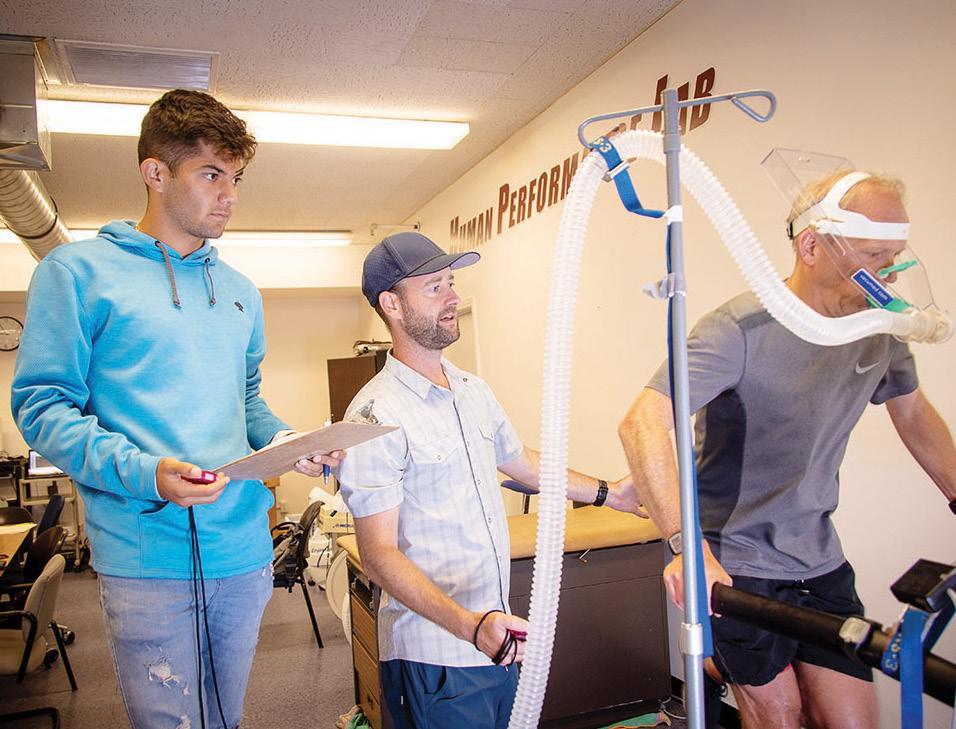
The Westmont Downtown Lecture, “Mental Training: Magic or Physiologic Reality,” is free and open to the public; no tickets or reservations are required. Free parking is available on the streets surrounding CAW or in nearby city park ing lots. For more information, please call (805) 565-6051.
“I’ll examine the role of mental training within sport performance, and how mental training may elicit these changes physiolog
Van Haitsma’s research focuses on the sensation of perception of effort, pain, and fatigue in athletes and how mental train ing might alter the body and/or mind. “I’m trying to understand why mental training works in athletes,” he says. “What unlocks this improvement in performance with mental training? Why are athletes able to run faster or cycle longer with no improvement in physical fitness? There is a large community of athletes here who may be interested in and could benefit from these findings.”
The Westmont Foundation sponsors the talk, part of Westmont Downtown: Conversations about Things that Matter. The foundation and local businesses also sponsor the President’s Breakfast on Friday, March 3, 2023.
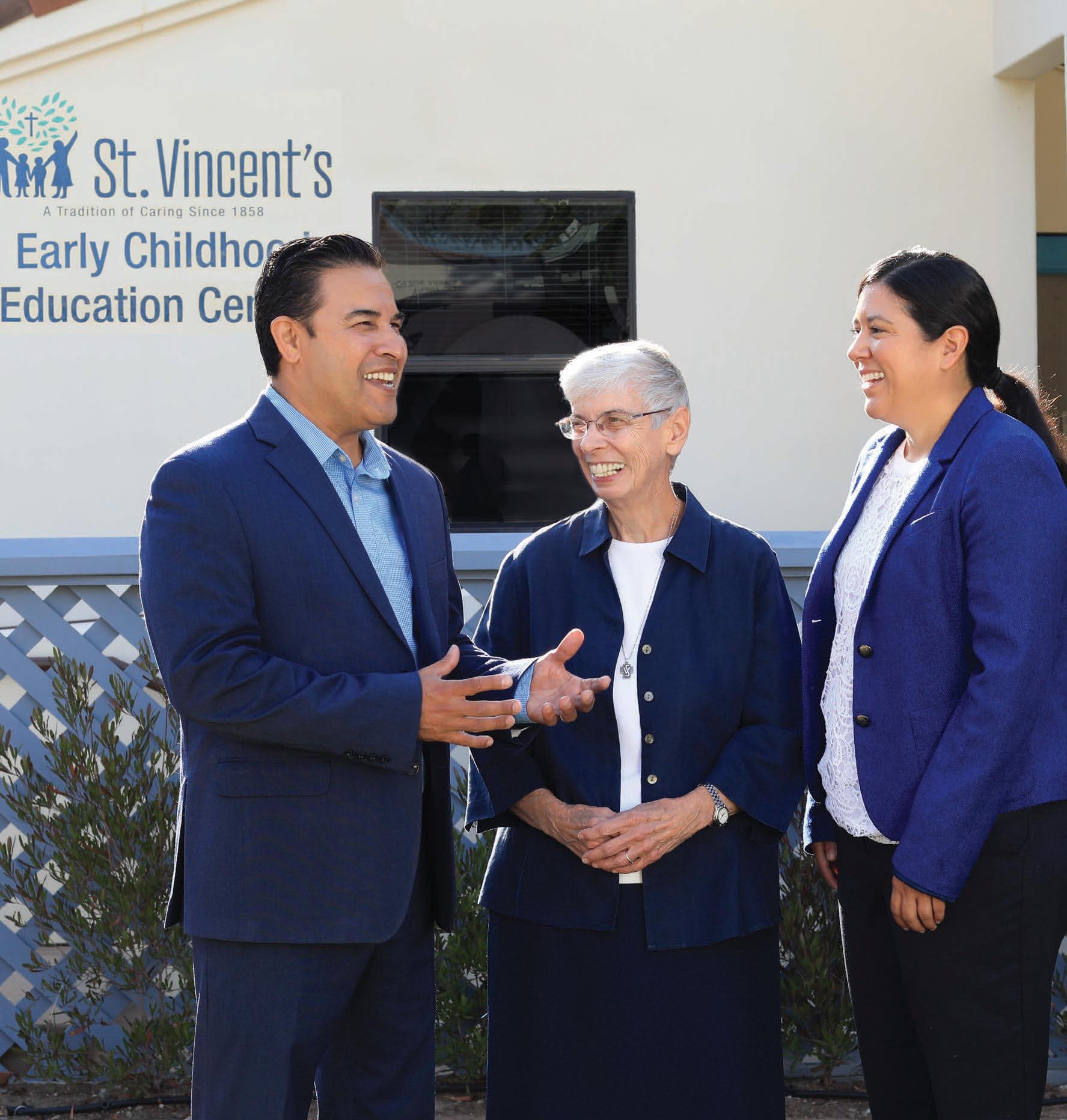
Clayborne Carson , the world-re nowned and acclaimed Martin Luther King Jr. scholar and director of the King Papers Project, speaks at Westmont’s Mosher Center for Moral and Ethical Leadership luncheon on Friday, November 4, from 12-1:30 pm in the Simmons Center of Westmont’s Global Leadership Center. Carson will present “The Lives and Shared Legacy of Coretta Scott and Martin Luther King Jr.” A lim ited number of tickets, which cost $100 per person, are available for purchase at westmont.edu/mosher-event. For more information, please call (805) 565-7251 or email specialevents@westmont.edu.
“Nobody knows the words and writings of Dr. King better than Dr. Carson,” says






Toro Canyon Park Road
Hot Springs Road
Oak Creek Canyon Road
La Ladera Road
Hot Springs Road
Padaro Lane
Riven Rock Road
Oak Road
Ennisbrook Drive
Drive
Hot Springs
Santa Rosa Lane
Eucalyptus Hill Drive
El Rancho Road
$7,900,000
$7,750,000
Romero Canyon Road $6,995,000
Hot Springs Road
$5,750,000
Willina Lane $4,995,000
Drive $4,950,000
Cowles Road $4,550,000

Loureyro Road $2,250,000
Sandyland Road
$1,450,000



















Coming off another summer of soaring dry heat, California water agencies can no longer rely on snowpack in the High Sierras, delivered through an aging and over-extended State Water System, nor can they rely on an over-drafted Colorado River. So, what’s left beside the pitiful plea of “Pray for more rain”?
What’s left is the giant natural reservoir known as the Pacific Ocean that covers more than 30% of the Earth’s surface. It is the largest water reservoir on the planet. Built for free by nature, it sits right on our front doorstep, covering more than 60 million square miles at an average depth of 14,040 feet. Rain or shine, the water in the Pacific Rim, minus its salt, represents an inexhaustible potential supply of potable water.



Not since Charlton Heston posed as Moses in The Ten Commandments and parted the Red Sea, has this nation needed a similar miracle to deliver the people of California (and the Western United States) from the worst mega drought in California in the last 1,200 years. The solution may lie in the floating desalination system from Santa Barbara-based SeaWell, LLC.
A cadre of credible scientists and engi neers at SeaWell have come up with a solution to the world’s drought dilem ma that is both environmentally friendly and cost competitive. Instead of building a massive land-based desalination plant with a crushing environmental footprint, SeaWell, LLC, has engineered a small er, patented saltwater desalination plant, contained within a SeaWell Buoy, posi tioned about a mile offshore in the Pacific Ocean at a depth of roughly 75-feet deep.
Each SeaWell Buoy is designed to be its own self-contained, desalination plant, capable of producing 950 acre-feet per year (AFY) of potable, reclaimed seawater, delivered to the shoreline at a cost per acre-foot that is significantly less than the current $3,500 per AF that the City of Santa Barbara charges Montecito for desalinated water.

Measuring 15 feet in diameter, each SeaWell Buoy would protrude some six feet above the ocean surface and descend some 40 feet below the surface. It would contain an unmanned, fully operational, state-of-the-art, reverse osmosis desalination plant with an environmentally friendly intake system and brine discharge.
The SeaWell Buoy, built to withstand heavy ocean currents and storms, is planned to be assembled and tested in the United States, and distributed where needed along the nation’s coasts. Buoys could be added incrementally as more pure water is needed.





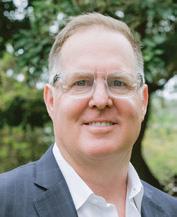





Fronterhouse , beloved hus band, brother, father of two, grandfather of nine, great-grandfather to four, business leader, and friend to many, passed away peacefully on September 17, 2022.
Jerry was born on May 22, 1936, in Ada, Oklahoma, the second son of three to Victor and Austa (McClintock) Fronterhouse. Victor was working for Magnolia Oil Company and Jerry’s early years were spent living in Wewoka, an oil patch town. Later the family moved to Oklahoma City where Jerry attended Northeast High School (Northeast) and distinguished himself as an honor stu dent, school leader, and athlete. He was President of his senior class, Co-Captain and All-City center of the Northeast varsity football team, ran track, and played basketball. Very well-liked by his classmates and close friends, they always noted his outgoing personality, ear-toear grin, and that he was always a gen tleman. Every summer he worked for his father’s trucking business. Also, during this time he developed an interest in cars, was very mechanical and proficient in modifying engines, and from time to time would race others on the country roads around Oklahoma City.
Upon graduation from Northeast in 1954, Jerry enrolled at the University of Oklahoma, where he majored in Petroleum Engineering. At OU, he met the first love of his life and future wife of 53 years, Gretchen Gover of Altus, Oklahoma, at the Mont Restaurant. She loved to tell the story that for their first date he asked her out to study at the library. While ini tially she thought he was joking, and hoped he was, she soon learned that he was serious about his academics. She loved that quality about him and supported him in all he undertook throughout their years together.
Jerry’s life was marked by action, engagement, service, hard work, great friendships, love for family, great successes, failures, loyalty, humility, integrity, a sense of responsibility, and a willingness to be in the fight.
Jerry’s penchant for action and engage ment led him to be very involved with everything OU had to offer its students and his accomplishment were many. He served as President of his fraternity, Beta Theta Pi. He served as Battalion Commander for the Naval Reserve Officers Training Corp (NROTC), and he was selected as one of two most Outstanding NROTC students for 19581959. He was Treasurer of Trident Naval Society, Treasurer of Omicron Delta Kappa Honor Society, a member of the select engineering society, Loyal Knights of Old Trusty, and many honorary soci eties, including Pe-et that recognized the top ten students at OU. He was selected as Outstanding Senior Man of 19581959, and named to the Big Man on Campus list his junior and senior years. He also played on the 1955 national championship Oklahoma Sooners foot ball team coached by Bud Wilkinson. All four summers of college he worked for Magnolia Petroleum Company and Calvert Drilling Company.
Upon graduation from OU in December 1958, he married his col lege sweetheart, Gretchen, on January 27th, 1959, in her hometown of Altus,
In Passing Page 444
Take a sneak peek of Montecito by Michael Cox in this ongoing serialization of his yet-to-be-published book. This fictional story is inspired by “tales of true crime THAT HAPPENED HERE.” After Cyrus’s performance at the economic summit and July 4th party, a new round of investors join ExOH holdings. Chapters 24 and 25 are available online at montecitojournal.net and the QR code below.
Scan
“Where were you last night?” Cyrus demanded, arriving only fifteen minutes late for our meeting the next morning; practically on time.
I looked around the room as if he might be talking to someone else. “I was here,” I protested.
“No, you weren’t,” Cyrus said. “At least you weren’t here when the fireworks went off.”
My face pinked. “I’m sorry, Cyrus. I… we have a family tradition of taking the kids to the beach to watch the show, and I did not want to break it. It seemed like you had everything–”
“I wasn’t talking about those fireworks,” he said, his tentacle-like fingers pantomiming explosions overhead. “I was talking about these.” He thwacked a stack of freshly inked papers onto the couch beside me.
“What is …,” I began, thumbing the papers, each identical in form.
“Are these new investor agreements?”
“I told you not to worry.”
I flipped the pages, tallying the amounts as I went, my heart racing. “Eleven million dollars?”
“Only eleven?” Cyrus said. He flipped through his own papers. “I forgot one.”
He sent one more document my way, this one signed by Huff Monroe, he of the bolero collection. It was for an additional nine mil lion dollars. “You raised twenty million dollars last night?” I said, my voice suddenly raspy. After the bizarre Central California Economic Summit event where he told the crowd he was done raising capital, I felt as disconnected to his business plan as ever. ExOh’s bank account at Miramar Bank and Trust was effectively at zero, holding only the two-hundred-twenty-five thousand dollars received from those who had given to the new, and still baffling, ExOh Global Relief Charities.
Cyrus looked back at me matter-of-factly. “I told you that I would take care of it,” he said. “At this point, Hollis, I would expect to see a little less shock and a little more gratitude on your face. Have I failed to deliver on any promise made thus far?”
I raised my hands involuntarily. “No, Cyrus.” I shook my head. “Not at all. I’m… I’m sorry. I didn’t mean to give you the impression that–”
“You know, in most companies,” he interrupted, “the CEO oversees raising the money. Why don’t I let you steer this boat for a little bit? See how you like being the one responsible for everything?”
Certainly, I was no stranger to frustrated bosses, but this time I felt more incompetent than self-righteous. The truth was that I could not do what Cyrus was doing. I could not schmooze. I could not host. I could not regale, wow, or inspire. I might be struggling with a few questions, but judging by the enthusiasm of ExOh’s investors, those doubts put me in a crowd of one. If I was not quick to heal Cyrus’s growing annoyance
with me, I might find myself cast to the side at precisely the moment when the tide seemed to be turning in the company’s favor. No, no, no, NO!
“I apologize, Cyrus,” I began, prepared to grovel and flatter until he smiled. “I promise, I have your back. If you sense surprise, it is only because I am in awe of you. You have done an amazing job putting ExOh in position to succeed.”
I could see his face soften a little; I hoped that meant I was on the right track.
“I realize I have a lot to learn,” I continued, “and I’m working hard to build the skills I need so that I can take things off your plate. I promise you; you have my full faith and support.”
A slight grin returned to Cyrus’s face. I counted that as a victory.
“Very good, my friend,” he said, retaking his seat. “The wires for the new investments should start coming in today. We have plenty of bills to pay in Asia, so I will need those funds transferred to Hong Kong immediately.”
I swallowed. “All of it?”
“All of it.”
Moving money always made me nervous, especially when the moved amount had seven zeros in it and left the Miramar bank account with pennies. But I was not about to let Cyrus see that concern on my face. “Absolutely.”
Cyrus’s full smile returned; that was the answer he wanted to hear, I guess. “Good,” he said. “We’ll need a press release about the capital raised ASAP. Also, have you talked to Noah?”
Have I talked to Noah? I had not spoken with Kai, Reuben, Umed, or Noah ever, and had only exchanged written messages with them via the BatSignal app. Increasingly Cyrus would send out group messages that were never responded to by anyone. It was the strangest executive arrange ment I had ever witnessed. “No,” I said. “Was I supposed to?”
Cyrus whipped out his phone, tapping and swiping with his right hand. “Three new clients,” he said. “Burberry, Zara, and São Paulo Alpargatas. Noah estimates annual revenues of…,” a few more swipes, “twenty-million dollars from these customers.”
“That is fantastic news, Cyrus,” I said. “When did Noah–”
“Put out one press release about the capital raised,” Cyrus interrupted with a raised hand, “and a separate press release about the new clients and projected revenues. As the CEO, you are the one making the sales projec tions, is that clear?”
Per usual, it was seventy-two degrees and sunny in Montecito, but I nevertheless shuddered. “Of course.”
“Excellent. Get me those press releases to review this afternoon. I want both pieces to hit the Associated Press newswire before the market opens tomorrow.” He closed his eyes, cracking his neck side to side. “Next week, we’ll be—”
“Cyrus!” a voice bellowed from the hinterlands of the Wimbys’ sprawl ing house. “What the fuck did I say about my luggage?” The voice contin ued, growing louder as it approached, the speaker’s high heels echoing off the hardwood floors. “Do I literally have to do everything for you?” It was Genevieve, only in a tone I had never heard from her before. “Man the helm? You want to man the helm? You can barely keep – Hollis!” she said, coming to a full stop when she saw me sitting wide-eyed on her couch.
“Yes, dear,” Cyrus said, with an exaggerated sense of calm. “We were just having our morning executive meeting. Just like always at about this time.” His pseudo-smile conveyed a hidden message. Genevieve’s eyes were locked on his, quickly softening from devilish glare to gracious host.
“What was I thinking?” she said, taking the final three steps into the sunken living room. “Hollis, please excuse my interruption.”
I stood and she approached, dismissing once again my futile attempts at shaking her hand and moving in straight for a kiss hello. The room’s tension was tar thick, but it was a reprieve for me. I had just barely escaped yet another groveling at Cyrus’s feet, and now he seemed distracted by whatever was going on with Genevieve. I had not known her long, but she did not strike me as the kind of person who dropped f-bombs casually. And what to make of her man the helm utterance? Every couple has their inside jokes, I reasoned, but nautical themed ones were new to me. Regardless, even though the substance of the argument was over my head, I was grateful for the interference.
“We are getting ready to visit our home in Fiji,” Genevieve said, eyeing me and turning a cold shoulder to Cyrus, “and, well, it wouldn’t be a vacation without a little chaos.” She smiled, clasped her hands together, and turned her body to Cyrus. “Sweetie,” she began, though it still didn’t sound sweet, “I found my Louis Vuitton luggage stuffed haphazardly into the closet of the guest bedroom. Several pieces are scratched, and I cannot find the keys to the locks. I believe I put you in charge of storing these things after we returned from Oman, no?”
Cyrus bit his lower lip and scratched his chin. I was not astute at read ing the room, but even a dolt like me could recognize that both Wimbys wished I were not here.
“Let me finish up with Hollis, dear, and then I’ll find those keys and sort out your luggage situation, ok?” He smiled but there was no covering his frustration.
“Of course, sweetheart,” she said, matching his concealed frustration with her own veiled fury. She turned and marched away, stomping the floor even louder than on her arrival.
Cyrus turned his eyes back to me, suddenly looking very tired. “Where were we?”
“Uh,” I stammered, “I think you were advising me about the incoming investor funds.”
“Right,” Cyrus said, still distracted. “Right. So, I want you moving that money to Hong Kong the instant it clears our Miramar account.”
“Yes. Absolutely. You got it,” I said, as enthusiastically as possible; I was nodding like a bobblehead and nearly gave him a thumbs up. All of this was procrastination. I had one more thing to discuss, and I dreaded broaching it. Cyrus’s Syrian refugee fundraising drive had come from leftfield the night of his Summit address, and I was unsure how to handle the next steps. It was a reasonable query, but I sensed that it was old news to him and might chafe our newly-healed scab. “And, uh, one last thing,” I stuttered, “How do you want me to handle those donations to the ExOh Global Relief Charities?”
“What?”
The irritated look on his face was exactly what I feared. “The, uh, ExOh Global Relief Charities?” I squeaked.
“I heard you the first time,” he said. “What about it?”
“Well,” I said, my stomach knotting. I had just clambered to solid ground, but my grip was slipping. “We need to send charitable donation receipts.”
Cyrus rolled his eyes. “So, send them.”
I swallowed. “But this is sort of an official process. It is for tax purposes. So, we actually need to – you know – donate the money to a charity.”
He shook his head. “Fine. Give it to the United Way.”
Every fiber of my being wanted to just say, sure, and be done with push ing the issue further, but I could not stop my mouth from moving. “Is the United Way doing charity work in Syria? Because I know that was the cause that you highlighted when—”
“I do not give a flying fuck what the United Way is doing!” Cyrus yelled. “Give it to the Red Cross. Give it to UNICEF. I do not care. Just donate the money to someone doing something in Syria and send the fucking receipts!”
Three f-bombs in five minutes; I was on a roll. “Ok, I can definitely do that,” I said, back in bobblehead mode. “And then, do you want the matching money from ExOh to go to the same charity?”
“What?” he repeated.
I was not going to make the same mistake in questioning his auditory capabilities, so I tried rephrasing my question. “You – I mean, we – pledged to match the contributions from donors five-to-one. So, ExOh needs to make its own charitable donation of,” I paused, pretending I needed to do the math in my head, “one-point-one-two-five-million to a Syrian relief charity.”
He scowled at me, ready to explode. Several seconds ticked by, his face slowly relaxing into a grimace of mild irritation. “Of course,” he said. “But Kai will make the matching donation out of the Hong Kong account. You just pass the money along, and I will take care of the rest.”
The distant sound of a train whistle echoed as I processed his words and for mulated my follow up questions. Why wouldn’t I just send ExOh’s matching donation at the same time I sent the contributions from everyone else? The back and forth made no sense. The old me wanted to literally raise a hand and object. But, as previously noted, my intuition had a spotty track record in pro fessional settings. If it were a restaurant, I would give it a one-star Yelp review. Challenging Cyrus on this issue would be a direct affront to his honesty.
My brain tried to square its circle. I was not doing anything wrong, I attempted to reason. I would be transferring money and following a direct order. If Cyrus Wimby —majority shareholder of ExOh Holdings – said he would handle the matching charitable donation from a bank account I did not control, I had every reason to believe he would, didn’t I?
But what if he did not? Had not good still been achieved? UNICEF or the Red Cross or the United Way or some other equally worthwhile charity would be receiving money inspired by Cyrus’s efforts, even if his efforts were rooted in a falsehood. That counted for something, didn’t it? And what good would come from me pitching myself onto the train tracks? Who would that serve?
In the nanoseconds that I contemplated these questions, Cyrus’s eyes narrowed. What’s it going to be? they said.
I would be lying if I said that I completely believed Cyrus would make the donation. I was suspicious, but I had no facts. Scratch that, I did have one fact: ExOh’s stock price had touched $42 that morning, making my on-paper position now worth four-point-two-million dollars. Lifechanging money, even in Montecito.
“Will do,” I finally said.


Over in the sunny cove of Santa Barbara City College, a small health revolution is brewing. At the helm is Student Program Advisor Becky Bean, ASW. With a background in the nonprofit sector and social work, Bean was excited to collaborate with the Student Health Services team at SBCC and spearhead their new wellness program: The WELL. First launched in January 2019, The WELL is a program that specializes in offering holistic health and wellness workshops, group counseling, skill-building groups, and resources.
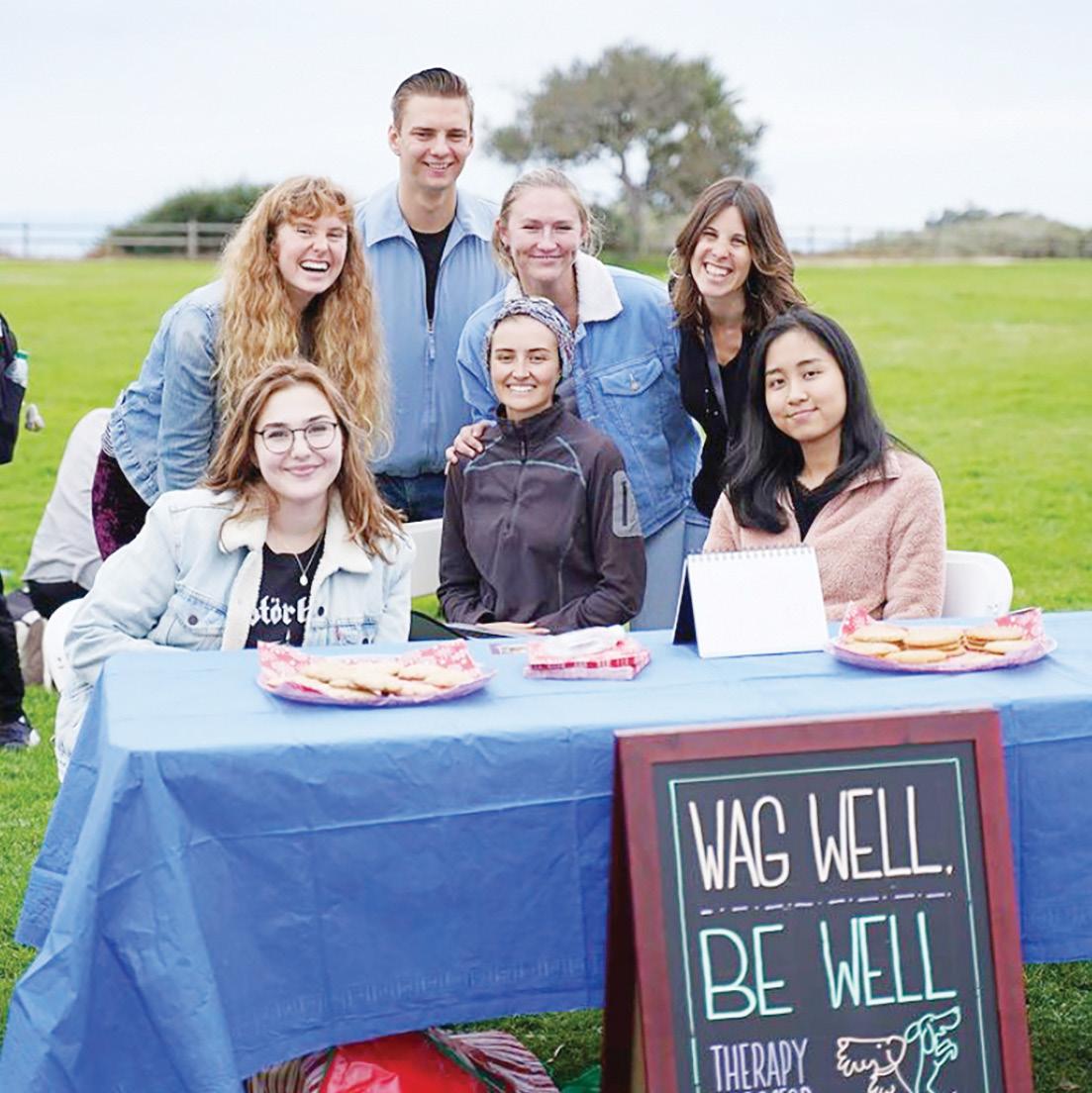

“The WELL is passionate about ensuring the diverse SBCC student community feels heard, respected, and encouraged to gain the vital knowledge, tools, and support to move toward optimal lifelong health and wellness,” Bean says.

Since opening their doors, The WELL has quickly grown in popularity, even when in-person programming wasn’t possible, and the program went fully virtual. Since then, other community colleges have begun to take notice and reach out to the team at The WELL in hopes of collaborating.
To learn more about the growing success of SBCC’s new preventative health pro gram, I reached out to Becky Bean.
Q. What is the importance of a program like The WELL?
A. To embrace our students with mental health and wellness support services. We want students to feel they are heard, respected, and teach them the relevant skills for when life becomes challenging, and they feel there is no hope. We encourage them to ask: How can we move through those experiences and prioritize our mental and physical health?
I think The WELL program is helping set students up for a very healthy rela tionship with their own journey of health and wellness. We encourage students to put their health at the forefront of their lives and encourage our students to know that they are worthy of support. We teach them the tools to advocate for their own health and wellness.
What is The WELL doing to cater to the needs of SBCC students?

We take a very dynamic, holistic approach. We like to talk about the eight elements of holistic health and wellness – the emotional, physical, nutritional, social, intellec tual, environmental, spiritual, and financial side of each student. We are very open about the fact that the path to wellness is not a one-size-fits-all. Each journey for our students is individual. We offer our students equity-based education around different wellness topics to meet their whole self.
We’ve been talking a lot about this idea of wellness. What does wellness mean to you?
Wellness is the relationship one has with their mind, body, and spirit. It is about looking at yourself as a very intricate ecosystem. Wellness is about learning how to navigate life’s challenges and prioritize your health and wellbeing – it is a balance.
No one wants to hear about unprecedented times… but The WELL has been open for a very interesting snapshot in time. How would you say this idea of wellness has changed?
What we have traditionally thought of as wellness has been reimagined. Now that we operate in a hybrid world, I think we really have the opportunity to provide health education in very creative and sustainable ways.
From March 16, 2020 – which is when we shut down in-person services – to March 16, 2021, our online platform had over 6,500 unique users using our health and wellness support services and resourc es. We were so grateful that students were engaging positively with our virtual platform.
I think more than ever, mental health and physical health are being prioritized. With all the collective trauma, this has ignited a new opportunity for us to become creative and even more innovative surrounding mental health education. We need to continually think of creative ways to collaborate, and the pandemic has accelerated that process.
What do you think are the biggest threats to wellness that college students face?
We have seen an increase in anxiety, depression, and suicidal ideation among college students, which has been exacerbated by the wide range of challenges the pandemic pro duced. In addition, college students nationally are faced with the loss of women’s repro ductive health rights and an uncertainty of the future regarding their health and wellness.

I am inspired by the fearlessness of college students to go out and seek support. We’re really trying at The WELL to break the stigma around mental health differences and challenges. We want students to feel like they can talk about their mental health and wellness needs. As our team says, it’s okay to not be okay. We must continually ask ourselves: “How can we best meet our students’ mental health and wellness needs so they feel empowered to express and advocate for their needs?” I think this genera tion has the authentic courage to seek out progressive changes in this world and make health and wellness a priority in their life.
From the shores of Scotland, Stella Haffner keeps her connection to her home in Montecito by bringing grads of local schools to the pages of the Montecito Journal


Confederate General Nathan Bedford Forrest is credited with the idea (often quoted in various forms) that military victory depends on “getting there first, with the most.” It might be added that what matters most in life generally is getting there at all.
But in the 1950s, when trans-oceanic travel by sea was beginning to encounter serious competition from the airlines, the Cunard Line, which operated both the Queen Mary and the Queen Elizabeth, also many other luxury liners, began using a slogan which became extremely popu lar: “GETTING THERE IS HALF THE FUN.” This was quite true for people who weren’t in too much of a hurry, who enjoyed the splendor and comfort which a crowded airplane could hardly provide. I’m glad that I was born early enough to have experienced a number of ocean crossings on those magnificent vessels, with their wonderful dining facilities, room service, and all kinds of shipboard entertainment. But the Cunard slogan did inspire one of my own satirical epigrams:
“GETTING THERE IS ONLY HALF AS FAR AS GETTING THERE AND BACK.”
And you might ask, “What about sea-sickness?” That was indeed an occa sional hazard for some people on some rough voyages. But then, there was, and is, also air-sickness, about which every air passenger is still reminded by finding a special little paper bag in the back of the seat in front of him.
But long journeys, which were once necessarily much longer, have had various purposes through the ages – not just to “get there” or to “have fun.” One motiva tion has of course, as General Forrest had in mind, been military – to get control of the land occupied by somebody else. Religion has also provided a principal purpose for mobility. This was striking ly illustrated by the Crusades, a whole series of religiously inspired movements covering centuries, and primarily inspired by the desire of Western Christians to recover what they considered the Holy Land, from Muslims who had taken con trol of it. These endeavors had varying degrees of success, but always involved the mobility of large numbers of people, at a time when most people were more or less tied to the land on which they lived and worked – and to that land’s overlord, when it came to providing military service.
Crusades tie in with the idea of Pilgrimages, which in various forms, persist to this day. The basic concept usually involves a jour ney to some place considered holy, to offer worship and pay respect. The object of the
group traveling to Canterbury, in Chaucer’s Canterbury Tales (1400), was to pay homage at the shrine of Thomas Becket, Archbishop of Canterbury, who was murdered in the Cathedral there two centuries earlier, for the crime of asserting the rights of the Church over those of the King.
Even today, there are long organized jour neys to supposedly sacred places, such as the City of Santiago de Compostela in northwest Spain, which contains the alleged burial site of the Biblical Apostle St. James.
The voyage of the people called Pilgrims, who settled at what is now Plymouth, Massachusetts in 1620, was not really in the same category as those other pilgrim ages. For one thing, these people had no intention of returning home after their journey had reached its destination. They were not seeking some known holy goal, but rather they sought to escape religious persecution in their home country.
Nevertheless, it truly was a religious impulse which inspired their migration. And one would need some such strong motivation to be that mobile in those days, because travel in general, and par ticularly trans-oceanic ventures, were known to be extremely hazardous.
Another incentive to mobility has been what we came to call Imperialism – the building of empires, starting with small colonies in possibly distant places. The purposes served might include explo ration, trade, or missionary zeal. Most inhabited parts of the world today began as parts of somebody’s empire. This of course can be traced back through the empires of Rome and of Alexander the Great of Greece. Our Bible is full of sto ries of peoples conquered and occupied by others, even forcibly removed as in the Babylonian captivity, so sadly commemo rated in the 137th Psalm, which begins:
“By the rivers of Babylon, there we sat down, yea, we wept, when we remembered Zion.”
I myself was born in the heart of the British Empire, on which people still said the sun never set. My own mobility took me far away, but I disclaim any responsi bility for that sun finally setting.
Over 20 years ago I attended a talk on Madagascar at the Santa Barbara Museum of Natural History. It was one long rant about how the ecosystems of Madagascar had been almost totally destroyed. How there were no indige nous organizations for outside conserva tion groups to work with. And how the Pope had gone there to encourage even more overpopulation on this island nation already devastated by overpopulation.
Furthermore, there was no infrastruc ture to support an ecotourism industry to make conservation profitable. And the government was too corrupt and unstable to invest in such infrastructure.
The speaker offered this as the only possible hope: Preserving the most valued Madagascar species on nearby Seychelles.
Just before COVID, the British jour nal New Scientist offered a tour to Madagascar and I immediately placed a deposit. After years of watching and waiting, I could actually go! It finally became a reality last month. I had no idea what to expect.
This “Eighth Continent” is home to 150,000 endemic species. Madagascar broke away from Pangea during the time of the dinosaurs and evolved unique life forms from lemurs to chameleons to baobab trees found nowhere else. It was one of the last places on Earth to be settled by humans.
The Malagasy natives are believed to be from faraway Borneo and Indonesia, only recently mixed with people of East Africa. In the 1800s it was conquered by the French, with independence won in 1960 at a huge loss of Malagasy lives.
What I saw was a place that did not look overly crowded with people. Most of the land is green, not covered with buildings. But looks are deceptive. Most of the “green” is human agri culture. Primarily rice, with pasture land for the “zebu” cows. Most of the remaining “forests” are imported trees like Australian eucalyptus that offer zero habitat for the endemic species.
Lemurs, chameleons, day geckos (think of the GEICO ads), and other precious endemic species need firstgrowth forest plants that can take a hundred years or more to establish.
real name) explained these challenges.
He explained that there are 18 different Malagasy dialects, corresponding to as many different tribal cultures. He could not accompany us into a large cave complex because his tribe is banned from it by the local tribe. Taboos, ani mism, and ancient tribal beliefs still rule. Governments change every few years and corruption siphons off what little money comes into the country.
On the few numbered “highways” in the country, I measured our speed at less than 10 mph on average. Heavy trucks rumble on these potholes inter spersed with bits of pavement, carrying valuable materials to and from ports. But little of that money maintains the roads. Locals pile dirt into the holes and hold out their hands for tip money.
Through this all, “William” offered some slim hope: National parks and private reserves are barely keeping most of the endemic species alive. There are now local organizations able to work with outside conservation groups like World Wildlife and the Durrell Trust. And to try to connect the tiny bits of fragmented habitat together.
Ecotourism infrastructure is happen ing. Most of the places we stayed were less than 10 years old; many were much newer. With tourism comes hustlers and criminals. We almost always had an escort. But tourism also brings money to tourism workers. Including people like William who educate themselves in biology and geology and can educate tourists and locals alike.
We were impressed that most of the places we stayed were solar powered, with limited battery power at night. Solar pan els are seen everywhere we went.
Most hopeful: William told us that in the past couple of years the government is mandating that all schoolchildren be taken to the national parks to see the lemurs and other unique wildlife trea sures of their country.
It might take hundreds of years to restore habitat. But at least there is a chance if the locals can see and reap the value of what they have.
Ashleigh Brilliant born England 1933, came to California in 1955, to Santa Barbara in 1973, to the Montecito Journal in 2016. Best-known for his illustrated epigrams, called “Pot-Shots,” now a series of 10,000. email: ashleigh@west. net. web: www.ash leighbrilliant.com.


Malagasy culture combines with the worst of imported colonial religion to say that every child is a “blessing.” It is rare to see a young woman who is not carrying a baby. Agriculture is slash and burn, with no plans for reforestation with native spe cies. Cooking fuel is charcoal, consuming endless amounts of vegetation. Every bicy cle and scooter is loaded with multiple passengers and/or charcoal.
Our excellent guide “William” (not his
Robert Bernstein holds degrees from Physics departments of MIT and UCSB. Passion to understand the Big Questions of life, the universe and to be a good citizen of the planet. Visit facebook.com/ questionbig







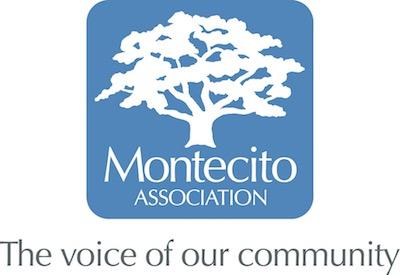















10-15% above budget, and Turner said that if it does not rain, this type of overuse could contribute to a lack of water availability as soon as 2023.
“Please do all you can to get your water use down,” he said, adding that the best action that can be taken is to reduce water irrigation by 20%. That could mean: if you water your yard for 20 minutes, cut that down to 16 min utes, Turner said. “If everyone does that, we will be back on budget,” he said. He also reported more customers are using District water as groundwa ter wells are producing less water or drying up completely.
Santa Barbara County Sheriff Lieutenant Butch Arnoldi read the crime report for the last month, which included trespassing in a guest house on Lambert Road; vehicle break-in on South Jameson Lane; residential burglary on Woodley Road; stabbing of a homeless man on the railroad tracks by Montecito Sanitary District; residential burglary on Chelham Way; fireworks at Butterfly Beach; and a suicide on Danielson Road. Lieutenant Arnoldi also reported on a vehicular manslaughter that occurred on East Mountain Drive that was recorded on nearby surveillance video. The suspect is known to police, and he is currently in Mexico, with offi cials going through the proper chan nels to apprehend him. The victim was a woman residing in Oxnard. The suspect and victim were known to each other and it was a targeted attack, according to police.
Lastly, Darcel Elliott from the County reported that the Randall Road Debris Basin ribbon-cutting cer emony will take place on October 24 at 10 am. “It really is a miracle that this debris basin was built in less than in five years,” she said. “It’s a really exciting time for the community.”
For more information about Montecito Association, visit montecitoassociation.org.
A public meeting to preview the Olive Mill Roundabout project is scheduled for Tuesday, October 25 at the Montecito Inn, from 4 to 5 pm. Project planners will show ren
derings of the roundabout design, dis cuss construction staging and access, review expectations for delays, and answer questions from participants.
“These meetings are intended to help everyone get ready for construction of this important improvement while acknowledging that building in this area is challenging,” said project rep Kirsten Ayars
The Olive Mill Roundabout will improve traffic flow at the inter section at Olive Mill Road, Coast Village Road, North Jameson Lane, the northbound Highway 101 offramp at Olive Mill Road, and the southbound Highway 101 on-ramp at Olive Mill Road. The new round about is designed for 20 mph, and drivers will see signs for each road way name at each leg of the round about. The center of the roundabout will be planted with olive trees and feature a sandstone retaining wall. Lighting will be improved around the roundabout.
Pedestrians will have access with crosswalks around the mountain side of the roundabout. Bicyclists can either take the lane through the roundabout or walk bikes using pedestrian sidewalks and crosswalks on the mountain side.
Construction is scheduled from mid-November 2022 through summer 2023.
The project will be built by Caltrans and is funded by SBCAG. Project preliminary design and per mitting were led by the City and County of Santa Barbara, with final design and utility coordination being led by SBCAG.
For more, visit sbroads.com. We’ll have more on the upcoming construc tion in next week’s edition.
about 65% of what it used to in terms of water,” says Byrne. Until March 2022 when California Governor Gavin Newsom issued Executive Order N-722, Santa Barbara County did not have to check with smaller water districts before issuing water well permits. For years, this allowed for the drilling of private wells with county approval but without Montecito Water District oversight. “Montecito Water suddenly found a thousand straws dipping into its groundwater basin,” says Byrne. “They couldn’t stop the permitting process.”
According to the Montecito Water District, as of 2020, most private wells were unmetered, meaning their water uptake is not factored into district water usage calculations. And based on num bers from a 2017 study conducted from 2011 to 2015, private wells could be contributing as much as an additional 50 gallons per capita per day. Montecito water usage, if it has declined at all, has not decreased by much.
Newsom’s recent executive order, in conjunction with the 2018 Sustainable Groundwater Management Act (SGMA), stopped this rampant permit ting of private wells. “SGMA basins, meaning basins that are required to do a groundwater sustainability plan like our basin, are not to authorize new wells that would potentially endanger the sustainability plan of the basin,” says County Supervisor Das Williams, over coffee at Renaud’s Patisserie on Coast Village Road. Williams expresses a keen interest in establishing policy that will increase the sustainability of this county and decrease its deleterious contribu tions to global climate change. He is also the Vice Chair of Central Coast Community Energy (3CE), which ser vices most counties along the Central Coast, of course, including Santa Barbara and Montecito.
To Williams, a sustainable Montecito means decreasing usage of both fossil fuels and water. “Water use creates more fossil fuel usage, and we don’t have enough water supplies here,” he says. “What might be different than other people is I don’t think that necessarily means less housing. In Montecito, population has almost nothing to do with water usage, unlike other places.” Williams goes on to tell me that Santa Barbara County has been in a drought three of the past seven years. “The only reason that we were exceeding the amount of water that we had due to the drought is because of the lawn watering,” says Williams.
In Montecito, roughly 80% of water goes towards landscaping, so switching to drought-resistant alternatives and native plants can make a massive dent in one’s water bill, cutting it down to up to nearly a seventh of its original cost.
Conserving water is the most obvi ous way to mollify water needs in our growing drought and to lower fossil fuel consumption, but there are other options like desalination and reuse, which are being heavily explored. As of 2020, Montecito has entered into a water purchase agreement with Santa Barbara’s Charles E. Meyer Desalination Plant to supply potable water through 2070. Recycled water isn’t as cut and dry, yet.
Kelly Mahan Herrick, also a licensed realtor with Berkshire Hathaway Home Services, has been editor at large for the Journal since 2007, reporting on news in Montecito and beyond.


“What good is a platform, if you don’t use it for good to raise awareness about things that people might otherwise not have any idea of, and to be able to highlight people who are on the ground doing the work?”
According to Williams, while the majority of businesses and residences on Coast Village are under the city’s energy jurisdiction, most residences in Montecito and the businesses in the Upper Village fall under 3CE’s –what is known as a community choice aggregation (CCA), which means that as opposed to a private utility, elected representatives such as Williams con trol its joint energy purchase agree ments with producers.
“We have 14 power purchase agree ments (PPAs) with facilities, mostly in-state, that will total 60% renewable energy by 2025; 100% by 2030 is the goal,” says Williams. “Most CCAs pre tend they’re already doing 100% renew able energy, but nobody’s doing that yet. Our advantage is, unlike SCE and PG&E, we don’t pay our stockholders 10%, because we don’t have stockholders. So, we can spend a lot of money on elec trification incentives for cars, buildings, and electric charging.”
“The aim of art is to represent not the outward appearance of things, but their inward significance.” – Aristotle
“Countries like Spain and Singapore and Israel have had these solutions for a long time,” says Byrne. “But it’s very new for the consciousness here in America and in California, which is crazy to me. In Orange County, they’re doing a hun dred million gallons of recycled water a day.” Byrne explains that the future of water reuse in Montecito comes down to the feud between two opposing view points. “One camp is convinced that the other only wants recycled water so they can water Birnam Wood Golf Course. The other camp has got their heads down and is just trying to figure out how to recycle water.”
Regardless of its potentially nefarious purposes, recycled water is far from a novel concept.
“If you live in an extremely highfire community like Montecito, the best thing you could ever do is make yourself a [large] amount of non-potable reuse water and keep your landscaping green,” says Byrne. “Because we have learned from fire after fire that [fire hitting] irri gated land slows down fast. Instead of sending your wastewater offshore, turn around and make that stuff available to be dumped on people’s lawns, trees –keep the place green.”
Byrne isn’t alone in her support for water reuse. Based on their projections, it appears the Montecito Water District expects local recycled water will become a reality by 2030.
Road
A truly once in a lifetime opportunity. This magnificent estate is designed by renown architect William Hefner and is modeled after Mr. Hefner’s personal residence – one of the most coveted estates in Montecito. Envisioned as a compound to be built in a loose quadrangle around a central pool & lawn, allowing for the ultimate indoor/outdoor lifestyle that Montecito has to o er. Each wing will be connected through glazed breezeways and fashioned from wood and Sandstone merging organically into the surrounding landscape. The estate will feature the main residence, guest house, pool house, gym – a stunningly modern aesthetic yet built with natural, local materials. This special opportunity allows you to secure the property now and be handed the keys to this spectacular estate upon completion.
acres
•
•
sq. ft. main residence
ft pool cabana
gated entry
• Mountain views
• Private, tranquil location, yet, just moments to Montecito’s Lower & Upper Villages





“All of the water on the planet is reused water. Whatever water got here, however it got here, is all there is,” says John Steed , President of the Community Environmental Council (CEC) and a former lawyer, as we spoke outside of Cafe Luxxe at the Montecito Country Mart. “So we’re all drinking, as they say, dinosaur piss. I have no problem with reuse conceptually.” Steed refers, here, to the concept of potable reuse, which differs from the potential for non-pota ble reuse mentioned above where water is simply treated to a quality fit for landscaping. At the same time, he rec ognizes the contradiction present in his lively attitude towards the prospect of water reuse.
“I’m going to finish this enjoyable conversation, and then I’m going to go across the street and play 18 holes of golf on a course,” says Steed. “It uses treated wastewater, reclaimed water, but it’s a lot of water and that’s a use that some people will find objectionable… I will say in the renovation of the course, they reduced the amount of irrigated acreage by rough ly 40%. That’s more sustainable.”
Steed grew up a Mormon just outside Salt Lake City, Utah, and was called to Japan as a missionary when he was only 19. A few years later, he graduated first from college and then with a degree in East Asian Legal Studies from Harvard Law. He practiced for nearly 30 years in both America and Japan, but shifted his priorities in 2007.
“When I held my first grandson in my hands, I just realized that this is an innocent being coming into the world with no power on his own to affect his environment and the society and hab itat that he and his cohort enter,” says Steed. “I had a bit of an epiphany. I realized that it was my responsibility to do whatever I could to ensure that the world he inherited was not diminished because of my actions.”
I ask Steed his thoughts on what a sus tainable Montecito might look like. “The answer to that question is nobody knows because we haven’t tried it,” he says. “If you think about the carbon footprint of a typical Montecitan, it’s enormous. It’s orders of magnitude greater than the car bon footprint of let’s just say the average Swiss person, and of course, the average African or South Asian. One question would be, are we willing to pay the true cost of our consumption?”
Everything that is produced in today’s global economy has at least some car bon emissions tied to its creation. Some products like cement or a steak have a much higher carbon footprint than something like linen or a can of black beans. We pay a certain cost for our products and services, yet almost always, that cost does not consider the associated emissions or societal conse quences. Paying the true cost of con sumption would close that price gap and allow funds to directly go towards
remediating the externalities caused by most modern modes of consumption.
“We’re grossly stealing, frankly, the capacity from the poor and vulnerable.
So my question is, should we be paying for that? What does it cost to take a ton of carbon out of the atmosphere?”
says Steed. “If you started charging that, then technologies to reduce that cost would be stimulated, and the incentives to change behavior, to avoid emissions, become more efficient.”
Steed also feels strongly that anoth er part of Montecito trying on a truer sense of sustainability includes changes to the housing market. “We need greater density in housing, and we need more housing,” he says. “We need to reduce the commutes of the people that we rely upon to perform essential services in this community.” Steed shares that in speaking with a friend active at the Sansum Clinic and Cottage Hospital, it became clear that they were struggling in recruiting doctors due to the high cost of housing. “If it’s hard for the doctors to find housing, imagine what it’s like for the people that ring up groceries or the people that take care of the maintenance of homes and landscapes.”
Supervisor Williams explains that start ing in the ‘70s and ‘80s new housing and construction were purposely restricted in Montecito; the goal was environmental preservation. However, “the data is that actually we’re killing the environment by doing that,” he says. “55% of our local emissions are from the vehicle. We’re decarbonizing the grid, but we’re not able to decarbonize your car. And in fact, the housing market is making young people live further and further away.”
Locales with a paucity of new housing opportunities can also spurn another problem: new development on the fring es of society in previously undeveloped areas that lack adequate infrastructure. Constructing affordable housing can not only provide homes for essential workers like medical personnel and firefighters, but also prevent environmental degrada tion elsewhere.
Alternatively, Sharon Byrne believes the answer to Montecito’s housing woes lies in protecting the housing that already exists for the use of permanent residents. “I’ve been trying to work on the city and the county to stop allowing every apartment and home in Santa Barbara and Montecito be turned into a vacation rental, because you’re taking supply off the market, which is constricting it and driving the cost up,” says Byrne. “On the one hand this place is cost prohibitive; it got more cost prohibitive because everybody’s renting out.” One solution lies in raising taxes on those who leave their properties vacant and who do not vote in-state. “They [could] make it very expensive
for you to continue to have your second home or vacation rental and use that money to fund the affordable housing that we actually need,” she says. “It’s all about zoning and keeping renters and vacation homes to a minimum, so that you benefit the people who actually live or work in the community.”
At the same time, Byrne, who spends a good deal of her time working to get unhoused individuals off the street, is not so enthusiastic about the actual prospect of affordable housing. “The state is forcing us to build more hous ing. Affordable housing never gets built because it’s just too expensive,” she says. “We are in a housing constrained community, and it’s our job to house as many of our people as possible. It’s just cuckoo that some of the peo ple that I meet living in cars had a place to live, and they were forced out because the landlord decided to turn it into an Airbnb.”
According to Williams, the multi-family housing located just south of the Upper Village provides a large boon to the community. Montecito is already low on middle-class housing, and due to the 2018 debris flow and hot housing market, is “in danger of losing any generational continuity in the community.” Furthermore, “it’s something that threatens every brown skin family in the South Coast. In the past we decimated our African American population. Now we’re dec imating our Latino population,” says Williams. “For the first time in its his tory, the west side of Santa Barbara is no longer a majority Latino.” Williams sees the potential for housing con struction or conversation surrounding existing job centers in Santa Barbara, Goleta, and Carpinteria. Investing in local housing would contribute towards decreasing the carbon emissions com ing from the tailpipes of commuting workers and perhaps help to preserve local communities of color.
“There can be no sustainability in Montecito if you’re thinking about Montecito as just Montecito,” says Sigrid Wright , CEO of CEC, over the phone as we spoke this past June. “Montecito exists because there are other communities all around it; it cannot exist in a bubble. We have to think of ourselves regionally because we depend on the North County and Ventura for our food, and we depend on Goleta to host our tech companies, for example.” Wright, originally from the Willamette Valley of Oregon, has been with CEC for over 25 years now and has been CEO since 2015. The Community Environmental Council was formed in 1978 in the aftermath of the catastroph ic 1969 Santa Barbara Oil Spill that also sparked the beginning of the modern environmental movement.
“Fifteen or so years ago, we asked ourselves, What’s the most pressing issue of our time? It became very clearly cli mate change,” says Wright. “A couple
of years ago, we went back and asked ourselves the same question. It’s still cli mate change. Not only that, but we have to double down; we have to do twice as much, twice as fast.”
For Wright, operating a nonprofit such as CEC comes with responsi bility, but also the ability to instigate real change. Since the beginning of 2021, CEC has doubled their staff and launched a $15 million capital campaign to expand their influence in light of the severity of the problem they aim to address. In addition to its own work, CEC prides itself on its ability to incubate and spin off other nonprofits to address the more specif ic impacts of climate change. Wright herself is co-founder of the Central Coast Climate Justice Network, Santa Barbara Food Action Network, and Central Coast Climate Collaborative, to name a few. “When you think about the for-profit sector, you think about how much duplication there is; it’s designed to be competitive,” says Wright. “The issues that the nonprofit sector is trying to address are highly complicated. Some amount of duplica tion... actually builds resiliency.”
Wright knows that the time for action is now. “This isn’t aimed at Montecito, but this isn’t the time to create your bun ker,” she says. “It’s not the time to figure out how to protect your enclave.” With the now year-round threat of wildfires encroaching, Californians can certainly feel the heat of the moment.
Byrne, in addition to her contribu tions in Montecito, works with the United Nations and has noticed a fas cinating trend. “The insurance guys are more up on climate change than every body else,” she says. According to Byrne, the first in Montecito to lose their homeowners insurance will not be those in danger of future debris flows, they are those living in the high-fire zone. “That’s who’s going to be first doing the migrating,” Byrne says. “It’s not even the floods or fires, it’s the finance guys who will just make it impossible for you to stay there.” Of anywhere in the world, however, Byrne has confidence that Montecito can make it through. “I’ve never seen the level of neighbor hood mobilization that I’ve seen here in Montecito. I had a homeless project on the east side of Santa Barbara; I never got this kind of turn out. I never got people showing up going, I’m going along the railroad tracks with you.”
To Byrne, throughout Montecito’s tran sition towards resilience and sustainabili ty, preserving the integrity of Montecito’s historic character is essential. “The char ter of the Montecito Association is to pretty much keep it semi-rural,” she says. “Don’t develop it into Venice Beach or Beverly Hills. Night skies are a big thing here, the whole thing is a nature paradise. The environment here is geared towards preservation. That’s why you get all these
For example, three SeaWell Buoys could replace nearly 100% of Montecito’s prom ised State Water allocation of 3,300 AFY, enabling MWD to lease its annual State Water allocation to inland communities or agricultural users.
SeaWell Buoy desalinated water would be delivered ashore from a SeaWell Buoy to a SeaWell Water Station through a new or existing seabed freshwater pipeline. The Water Station, located on a 1/4-acre shoreline site, could service multiple SeaWell Buoys. Initially SeaWell plans to utilize an existing operational solar microgrid to power its first California installation. The company plans to use renewable energy for its future projects.
Fresh potable water from the Buoy could be used immediately; or injected into underground water basins for future use, thus allowing any surplus water to be leased to thirsty farm communities to recharge their wells, irrigate fields, and pre vent soil collapses. Local water agencies along the coast could enjoy a new revenue stream from inland water sales to offset any new SeaWell costs.
Environmentalists should applaud the SeaWell Buoy concept. Here are the advantages that the SeaWell, LLC system offers compared to other solutions:
SeaWell desalination Buoys are not affected by a sea water rise or a climate change. Compared to the environmental footprint of a new $1 billion reservoir, or a new advanced recycled water plant, or a new onshore desalination plant, the SeaWell Buoy footprint is insignificant.
The major complaint against seawater desalination has been the cost of energy to push seawater through RO membranes to remove brine from seawater. The average electrical rate in California in June 2022 was 29 cents per kilowatt hour (kWh), up 25% over the previous year, compared with 14 cents per kWh in Florida and 13 cents per kWh in Texas. In Israel, desalination energy costs are 16 cents per kWh. California’s hefty energy rates raise desalination costs significantly, making energy efficiency a high priority for SeaWell.
SeaWell Buoys bring ashore only desalinated water, which is only half the volume that must be brought ashore for conventional land-based plants. Land-based desal plants need two gallons of seawater to produce one gallon of desalinated water.
Low-velocity inflow screens avoid impingement or entrapment of sea life. The SeaWell Buoy is designed to emulate percolating water through a sandy beach using low intake velocities to avoid harming sea creatures.
A novel rotating dispersal of residual brine on the SeaWell Buoy assures a quick dilution to ambient salinity well above the seafloor.
Suppose the Buoys or their conveyance pipes break or spill? Not to worry. Safe, potable water is spilled into the Pacific Ocean. How about a Buoy maintenance malfunction? Tow in a new Buoy and tow out the old one for repair.
SeaWell Buoys have the potential to assist in the restoration of wetlands, recharge depleted water basins, assist in the protection of endangered species, and help pre vent seawater intrusion into vulnerable coastal aquifers.

SeaWell technology development started in 2018, led by Jim Dehlsen, a pioneer in U.S. wind and marine renewable energy industries. Dehlsen is known as “the father of the U.S. wind power industry” for his seminal work in wind turbine design and power. Working closely with the National Renewable Energy Lab (NREL), Dehlsen developed a variable-speed turbine to reduce wind energy costs. He sold that company, Zond Systems, to Enron, which formed Enron Wind. In 2002, General Electric acquired Enron Wind to form GE Wind, General Electric’s entry into the wind power industry.
In 2001, Dehlsen formed Clipper Windpower in partnership with the U.S.
President Gayle D. Beebe. “His inspiration al work has deepened the nation’s appreci ation for King’s profound insights, prolific pastoral voice, courageous personal sacrifices, and wisdom. I’ve always deeply appreciated his transformative work, the life-changing leadership he modeled, and his writings and teachings. We’re honored to bring Dr. Carson to campus and hear his unique per spective on our country’s most prominent civil rights leader. We look forward to sitting in a front-row seat to learn from him.”
Dr. King’s widow, Coretta Scott King, handpicked Carson in 1985 to help our country carry out King’s legacy. A professor emeritus of history at Stanford University, Carson has directed the King Research and Education Institute, a cooperative venture of Stanford, the King Center, and the King Estate to publish the definitive 14-volume edition of The Papers of Martin Luther King Jr., a collection of his most significant corre spondence, sermons, speeches, published writings, and unpublished manuscripts.
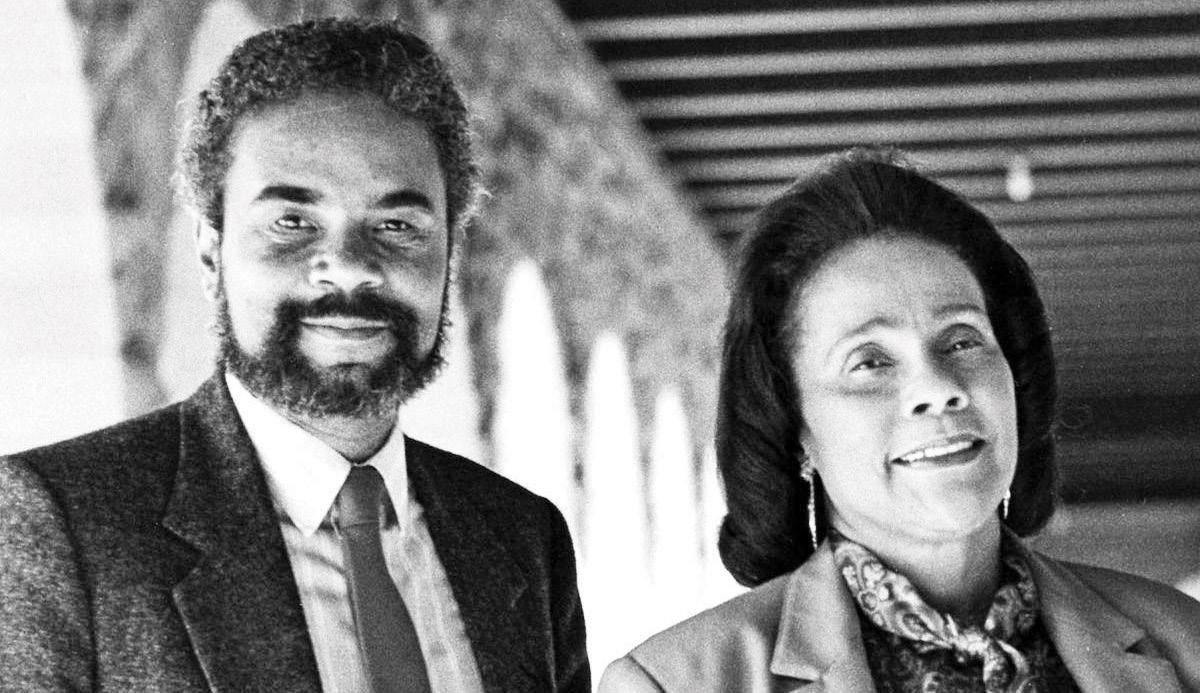
The seven volumes already published have become essential reference works for researchers, influencing scholarship about King and the movements he inspired that eventually cost him his life and transformed our nation. Carson and his staff have spent more than two decades working to edit and publish these works, intending to make King’s documents and important revelations more widely available to researchers and casual readers alike.
For 40 years, Carson has served as a pro fessor at Stanford, primarily teaching U.S history and African American history. He has taught and lectured in Britain, France, China, South Africa, Zimbabwe, Tanzania, and throughout the United States. As a renowned speaker, author, and scholar, he has appeared on numerous programs, including NPR’s Fresh Air, the Charlie Rose Show, Good Morning America, and the CBS
Evening News. Carson serves on the global council of the California International Law Center at the University of California, Davis School of Law.
He has written several books and arti cles about the civil rights movement and contributed to numerous documentaries. His first book, In Struggle: SNCC and the Black Awakening of the 1960s, received the Frederick Jackson Turner Award in 1982. He has also authored The Autobiography of Martin Luther King Jr. (2001), A Call to Conscience (2002), and Martin’s Dream (2013). Carson served as the historical adviser for the film Freedom on My Mind, nominated for an Academy Award in 1995.
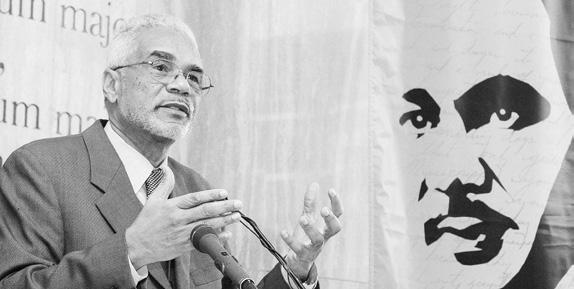
The Mosher Center for Moral and Ethical Leadership, established by a gift from the Mosher Foundation, falls under Westmont’s new Global Leadership Center, which opened in fall 2017 under President Beebe’s leadership. Ed Birch, president and CEO of the Mosher Foundation, and his wife, Sue Birch, education program specialist with the foundation, helped develop the Mosher Center, which offers national conversations on the critical need for moral and ethical leadership, regional executive education and undergraduate leadership development.
Past speakers include: Geoffrey Moore, Bob Woodward, Jon Meacham, David Gergen, Guy Kawasaki, Daniel Kahneman , Charles Duhigg , Jack Rakove, and Ronald C. White.

 by Jim Buckley
by Jim Buckley




va Violet Van Prooyen and Kenneth Paul Kahn were married on Saturday, September 24, 2022, on the Santa Ynez Chumash Reservation. A double quartet serenade of strings surrounded the ceremony under the oaks on a historic Ortega property where the groom’s great “Tio Charlie” Ortega once lived.

Officiated by the groom’s brother, Thomas Gomez , and witnessed by the groom’s son, Austin Kahn , the wedding party – affectionately referred to as ‘the parade of love and joy’ and consisting of 14 children carrying flags, ceremonial abalone and sage, white rose petals, and the rings – were the bride and groom’s nieces, nephews, and ‘tiny cousins.’
Kenny’s godmother, Elise Tripp, walked him down the aisle in honor of his late mother, Rachel Pace, and the bride, by her brother and proud Marine, Elliot Macdonald
The bride’s mother, Sandra Macdonald, sat front row alongside Kenny’s family tribal matriarch, Bea Marco (90).
Close family, Native American dignitaries, a local Congressional Representative, and dear friends were in attendance, and enjoyed a family style dinner cre ated by Chumash Resort & Casino executive direc tor of food and beverage, Chef Peter Sherlock , fol lowed by a six-tiered gold leaf cake and dessert bar created by executive pastry chef Levi Richard .
After dinner, guests par tied and danced to a DJ smash-up band featuring saxophonist George Shelby, whose fame includes touring with Phil Collins.


In lieu of gifts, guests were invited to consid er a donation to People Helping People or the Native American Rights Fund. Kenneth Kahn is the Chairman for the Santa Ynez Band of Chumash Indians, and Eva Van Prooyen is a licensed psy chotherapist consulting worldwide as a relationship specialist.




At the fundraiser were Tony Morris, Amy Bacheller, Cynthia Manigault, and Glenn Bacheller (photo by Joanne A Calitri)
want a secretary, I lose them because they want to be a writer. I said no, no, I want a job while I go to school. And all I can tell you is three weeks later I came in and on my desk was a pile of ‘brown notes,’ the phase you do before you go into print. She said to me, I don’t have the time to do this but if you see something wrong change it, I trust you – and the next thing I knew I was an associate editor! She was the most wonderful woman I have ever known, and one of the few who really broke the crystal ceiling. I was born with a form of muscular dystrophy, which propelled me to make something of myself. The kids called me names, and I didn’t understand that; what did I do wrong? You then realize you’ve got to take charge and can’t let people walk all over you. At one point I had a tough attitude because I didn’t want people to knock me down anymore.
You know they’re going to find a reason to dislike what I am going to tell you. When you watch the talk shows on entertainment, there is just no recognizability that they can make a statement and tell you that this is the truth. And although the culture in our country is changing, it doesn’t mean you can’t still do it the right way. There is no authority in the entertainment industry today – once Oprah steps away, which she has in some fashion,
and when I stepped away, there was no one who came along to replace me. Now it’s about people who make a lot of money and don’t care if the person is jerky, as long as the audience is laugh ing. Everything in the world seems to be about money, who can make the most money, and what influence that money has. For many people it is the money that influences them, but when you are a reporter, you have to know what is going on or happened and report it, or people are going to know you lied.
Is there anyone you want to interview?
I wouldn’t want to do the interview unless the person gave me a long period of time to talk with them. You can’t just do an interview with someone and what ever they say you believe. Right now, I’d like to talk to half a dozen famous people who would be willing to share what I have been sharing on my podcast – what it’s like to grow older and age.
The October 9 fundraiser at Sunstone Winery in Santa Ynez, titled, “Love, Italian Style” was sold out. Keynote speak ers were Lorenza Errighi, Consulate General of Italy in Los Angeles; RBF Board Chair Cynthia Manigault; and Tony Morris, RBF Executive Director.

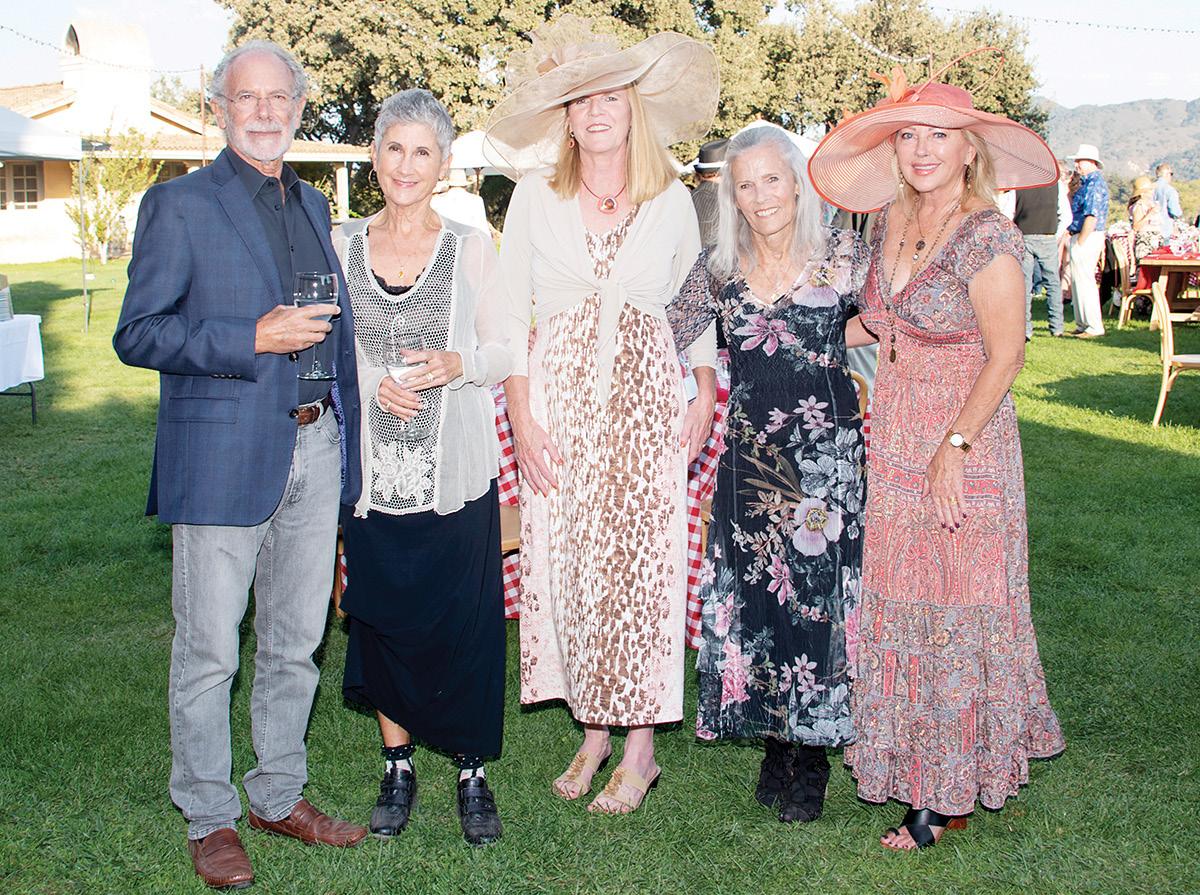
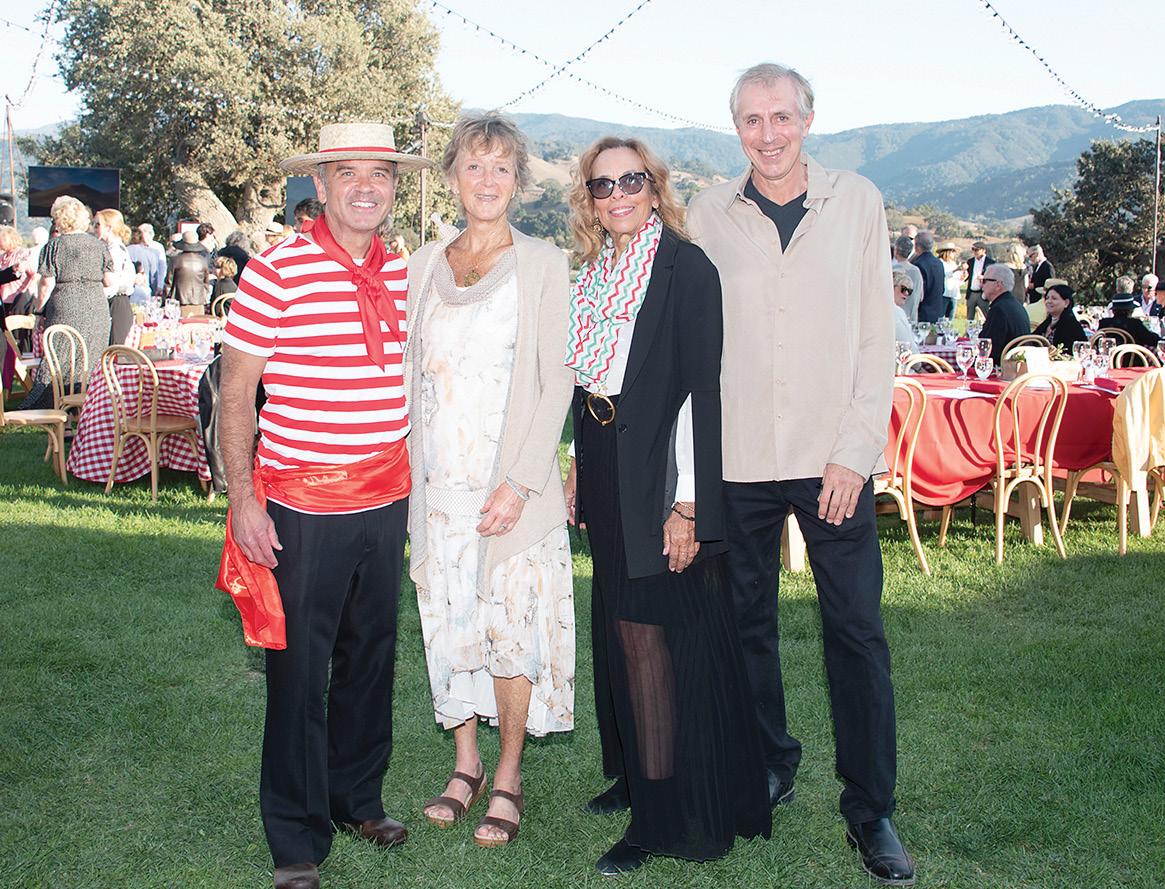
Attendees included Barrett’s support ers since the foundation’s inception Bo Derek and John Corbett, Board VP & Treasurer Djamila Cabugos, chef and
Karen & Peter Brill
Winnifred Lennihan
Carol & Ned Quackenbush
Christine & Stefan Riesenfeld
Ginger Salazar
Abbe & Dennis Sands
Deborah Schwartz
J’Amy Brown
Merryl Brown
Susan & Claude Case
Jane & John Dailey
Ann Daniel
Phyllis de Picciotto

Jane & Bruce Defnet
Mimi DeGruy
cookbook author Michele Carbone with husband Jim, Steven and Joan Reden, June Martin , Susan Weber , Tresha Sell, Rick and Heidi Holly, Janelle Parsons, Amy and Glenn Bacheller and Kevin Nimmons, Donny Lieberman of Sunseri Construction with son Jesse, and Jo-Anne and Jay Blatter, Harry’s House architect.
Dawn & David Ligon
Lisa Loicano
Debra Manchester & Don MacMannis
Frances Marsh
Brett Matthews, Montecito Union School Board
Jelinda & Barry DeVorzon
Mary Dorra
Emmy Dunn
Dan Eidelson, Montecito
Planning Commission
Colette Eyears
Jeff Farrell
Judy Foreman

Susan French
Julianna Friedman
411: ronabarrettfoundation.org
Marilyn & Dick Mazess
Top event sponsors were Sunstone Winery, the Wood-Claeyssens Foundation, Sunseri Construction, Vespa Santa Barbara, Pacific Western Bank, Santa Ynez Band of Chumash Indians, Union Bank, and the Bacheller Charitable Trust.
Maggie Mixsell
Diane Morgan
Doug Morgan, Montecito Water Board
Bill Palladini, Montecito
Board of Architectural Review
Richard Shaikewitz, Montecito Water Board
Myron Shapero
Ted Simmons
Tony Spann, Montecito Board of Architectural Review
The Rona Barrett Foundation is a non profit organization providing affordable housing and supportive services for seniorsin-need. With dignity, respect, and love, the Rona Barrett Foundation presents residents with a broad variety of programs that meet their needs and enhance their lives.
Kay & Ted Stern
Pru & Rob Sternin
Mardee & George Tamas
Dick Thielscher
Vivenne Leebosh & Ralph Thomas
Joanne A. Calitri is a profes sional international photogra pher and journalist. Contact her at: artraks@yahoo.com
Carol Hawkins & Laurence Pearson
Anne & Michael Towbes
Joan Wells
Amy & David Wilson David Yager (partial list)
Susan Keller


Board President/ CEO Christine Beirne with her newest oil on cra dleboard works (photo by Joanne A Calitri)
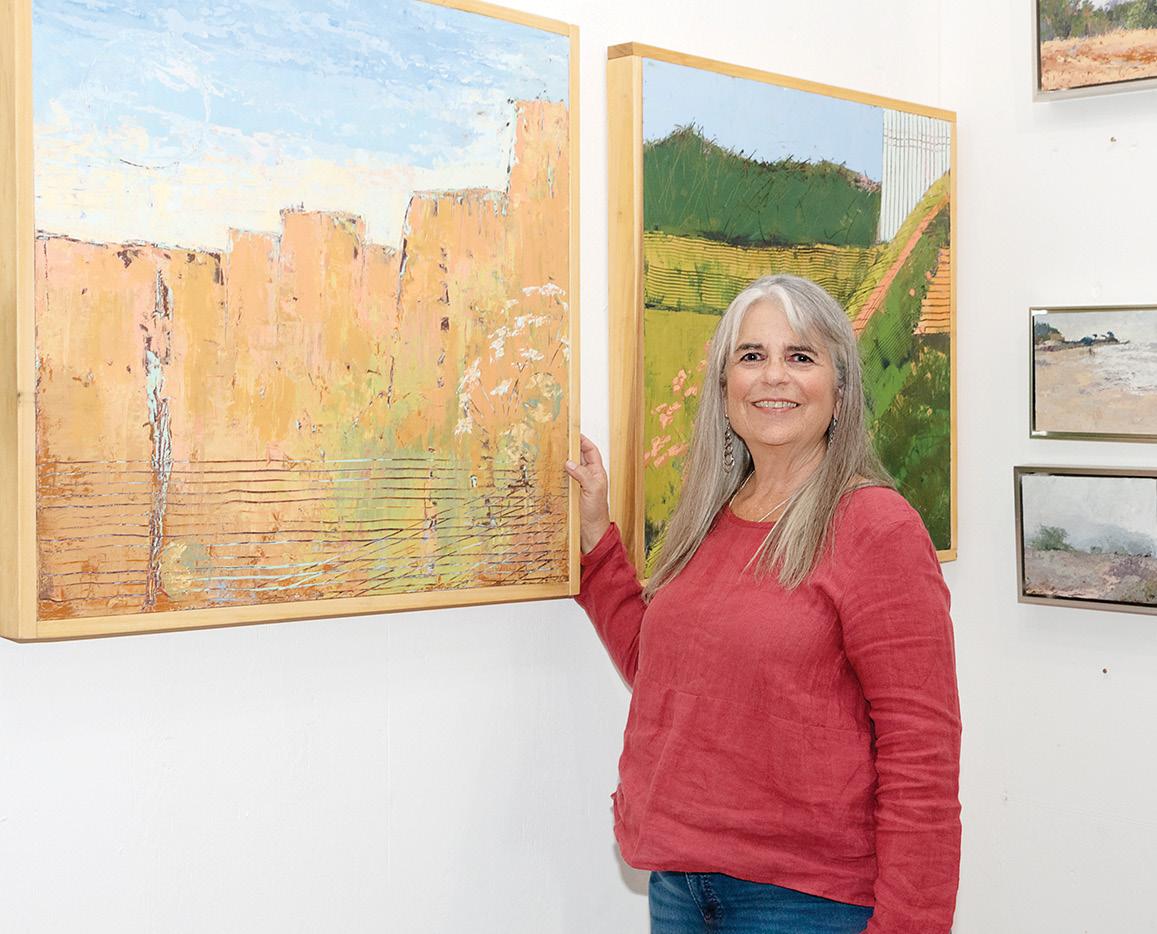

Christoper Noxon at his studio with his book, Good Trouble (photo by Joanne A Calitri)

– again this year. The tour had over 70 artists participating, and an estimated 750-1,000 visitors. Highlight includ ed new OSA member Christopher Noxon , a former L.A. journalist and Los Feliz transplant during the pan demic, who is a self-taught artist using various mediums for portraits and abstracts, and mentioned his book, Good Trouble , was banned in Virginia Beach; Julie Grist is passionate about phonebooths and landline phones, and portraits in oils on cradleboard;
European process porcelain artist Sandra Torres uses liquid clay in plastic molds and stains for decorative patterns, from kiln to finish in six weeks; and OSA Board President and CEO Christine Apostolina Beirne experiments with patterning oils on cradle board using pallet knives, bris tle sponges, and other tools to create both abstract and landscape works. Visit ojaistudioartists.org for more information.

Breezing into town after a three-year hiatus, Johnny Irion and his band U.S. Elevator, with members Erich Riedl , Brett Long , Nate Modisette , and Anders Bergstrom , took the stage to a standing-room only show at SOhO on Sunday, October 9. Irion started with a solo acoustic set on guitar and piano. Invited guest Khasy Modisette sang two songs with the band. U.S. Elevator played their entire 2015 L.P. The reveal is that Irion and band mates are planning a second L.P. with their backlog of unrecorded materi

Straight from a Sold Out Show at
Hollywood Bowl
Sat, Oct 15 / 8 PM / UCSB Campbell Hall
“In pigtails and power-clashing plaids, they may be the country’s most exciting teen punk band, a galvanizing

New York
Surfer Legend Comes to Santa Barbara Laird Hamilton

in Conversation with Rory Kennedy Sun, Oct 16 / 7:30 PM / Arlington Theatre
is flat out surfing’s biggest, boldest, bravest. He is the best big-wave surfer in the world today, bar none.” Surfer Magazine
Thu, Oct 27 / 8 PM
UCSB Campbell Hall
of the major lyricists
her generation”
Grammy Award winner

sensation
The New York Times
Best Dance of the Year
The Nrityagram Dance Ensemble
in Collaboration with Chitrasena Dance Company Wed, Oct 19 / 8 PM

One of the premier Indian dance
Campbell Hall
Morrison
al, out spring 2023. Irion wrote a song about Montecito in 2017 titled, “Palm Springs.” In 2020, as a trib ute to Ravi Shankar he wrote a song with John Goodwin , titled, “Inside the Endless Om,” which features con tributions from Jeff Bridges , Stone

Temple Pilots’ Robert DeLeo , Wilco’s Mikael Jorgensen , Tim Bluhm , Greg Loiacono , and recently passed Alan Kozlowski, a student of Shankar and close friend of Irion.

Visit facebook.com/uselevator for more information.

An overcast Monday, October 10 saw the 21st Annual St. Vincent’s Golf Classic Fundraiser at the Montecito Country Club touting 88 participants from 22 corporate sponsors, the most since its inception. This year the tee-
gift for each participant was a pair of golf shoes. Overseeing the event were St. Vincent’s President & CEO Rosa M. Paredes, and Chief Development Officer Dr. Regina Ruiz, with their staff and volunteers.
In addition to the silent auction, there was a raffle with gift cards from over 20 local restaurants and













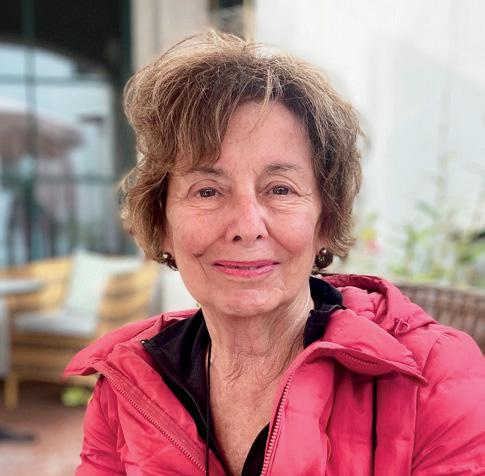










What comes to mind when you think of the month of October?
Probably, the color orange. Perhaps, a pumpkin. However, for local firefighters, the arrival of fall conjures up something else orange – wildfire.
The spring and fall months on Santa Barbara’s South Coast can be both the most spectacularly beautiful and the most treacherous.
“As we turn our calendars to October, we know that the sundowner wind pat tern is likely to become a prevalent fea ture of our local weather once again,” said Montecito Fire Chief Kevin Taylor.
A year ago on October 11, 2021, the Alisal Fire broke out along the Gaviota coast. Montecito firefighters quickly aided our local partners in the initial response. During those early hours of the fire fight, they experienced sustained winds of up to 45 miles per hour and gusts up to 75 miles per hour.
The powerful winds propelled the flames down steep canyons and the fire’s footprint grew from 500 to 8,000 acres in just 48 hours.
In short, the Alisal Fire put on a clinic in autumn sundowner wind-driven wildfire.
Nic Elmquist is a Wildland Fire Specialist for Montecito Fire and quali fied Fire Behavior Analyst.
“Fall fires can move very quickly,” Elmquist said. “In the Alisal Fire, the com bination of sundowners, steep topography, and critically dry fuels caused it to grow rapidly. It’s a combination that we’re very prone to in Montecito with our foothills and canyons, dry vegetation, and expected sundowner wind events this fall.”
By this time of year, the vegetation is at its driest state and therefore, most receptive to burning, Elmquist explained.
Across the country, October is des ignated as Fire Prevention Month. Fire departments nationwide visit local schools, host fire station open houses, and share important life safety messages.
This year’s theme is “Fire Won’t Wait. Plan Your Escape.”
For the Montecito community, this theme has a layered meaning.

If your child attends one of our local schools, they will likely be visited by Montecito firefighters. The firefighters will teach students the basics of fire safety such as not to play with matches, “Stop, Drop, and Roll,” and reminding parents to check the batteries in smoke detectors.

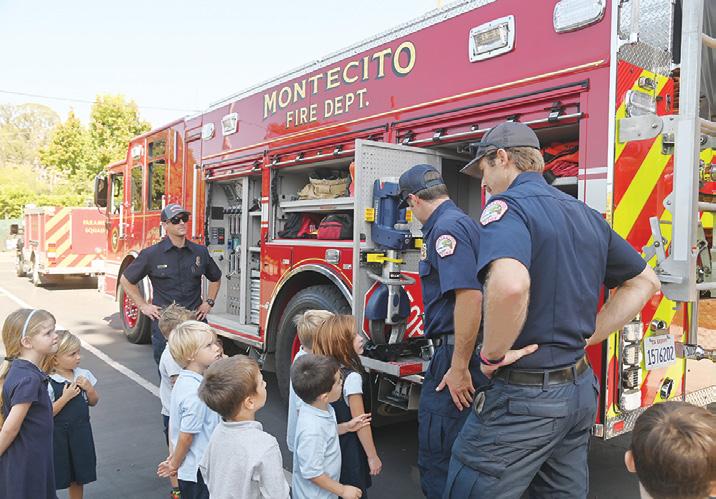
These are the building blocks of fire prevention. Educating our children about fire safety lays the foundation for a safe, fire-aware community.
Part of the presentation to students includes firefighters teaching the impor tance of knowing two ways out of your house in the event of a structure fire.
“In a wind-drive wildfire, fiery embers can travel for long distances and ignite
homes,” Elmquist said.
This means that today’s wildfires have potential to start structure fires. The Camp Fire is a prime example. Burning homes created a domino effect, leveling entire neighborhoods.
It’s important to know two ways out of your home and be able to enact your wildfire evacuation plan immediately to get out of the fire’s path.
Three-word phrases seem to be hall marks of fire safety education campaigns.
“Stop, Drop, and Roll,” is engrained in our minds for burn prevention.

Our hope is that “Ready, Set, Go!” is equally cemented into our collective com munity mindset surrounding wildfire.

Montecito Fire’s Prevention Bureau spent the spring and greener summer months “readying” our community for wildfire through the Neighborhood Chipping Program, Vent Retrofit Program, roadside weed abatement and various vegetation management projects.
While “High Fire Season” was declared for the South Coast in May, the arrival of fall sundowners and critically dry vegeta tion further elevates Montecito’s fire risk.
Now is the time to be “Set” with your wildfire evacuation plan and consider what actions you would take if a wildfire occurred in Montecito.
With your loved ones, designate an emergency meeting place outside of the immediate Montecito community. During that process, also identify the best evacuation route(s) to get from your home to your emergency meeting place.
Spend 10 minutes with your family locating your home’s gas, electric, and water main shut-off controls and practice how to turn them off and on.
Inventory your home, centralize import ant documents, and prepare a disaster kit to last your entire family at least three days.
Sign up for Santa Barbara County’s emer gency alerts at ReadySBC.org and/or verify that all your contact information is correct. These preparatory actions are the

building blocks to a systematic, calm, and successful wildfire evacuation process if and when it is time to “Go!”
Copies of the “Ready, Set, Go!” wild fire action plan are available at both Montecito Fire stations as well as online at montecitofire.com.
The Santa Barbara County Fire Safe Council will host its Wildfire Preparedness Exposition on Saturday, October 15 from 11 am to 5 pm at Direct Relief International, 6100 Wallace Becknell Road, Goleta.
We encourage you to attend to learn how you can prepare your home and family for wildfire. The event will include educational exhibits and activities for kids. Visit us at the Montecito Fire booth to learn about wildfire preparedness pro grams specific to our community.
For more information about the expo, visit sbfiresafecouncil.org.
Christina Favuzzi is the Montecito Fire Public Information Officer



The Santa Barbara Symphony’s lat est rendition of Carmina Burana is a collaborative affair with the area’s other groups and troupes (photo by David Bazemore)
The Santa Barbara Symphony last presented Carmina Burana just seven years ago, but, says music and artistic director Nir Kabaretti, the time is ripe to launch its new season with an even bigger community cultural collaborative effort in presenting the Carl Orff classic cantata composed in the mid1930s based on 24 poems drawn from a 10-times-larger Medieval manuscript of poetry dating back to the 11th century.

State Street Ballet, Santa Barbara Choral Society, Quire of Voyces, and the Music Academy’s Sing! Children’s Choir will join the symphony on stage at the Granada for a pair of performances on October 15-16, close to 170 performers in all.


“The world is a very different place today, and all of our organizations have evolved, too,” Kabaretti said. “Carmina Burana is one of those pieces that you are happy to revisit every few years, and we’re lucky that we have the support here to do the real thing, present with a huge orchestra and chorus and ballet, as the composer envisioned it.”
Orff’s opus is a very powerful and per cussive piece that has become beloved with audiences for decades due to its contem porary take on old chants highlighted by propulsive rhythms and explosive energy that makes it very entertaining, Kabaretti said, adding that the work also offers a dif ferent and lighter perspective on history.
“The text was written by monks and church people, but there’s nothing sacred about it,” he said. “In fact, they speak about gambling and love and human pleasures, and it also has a lot of tunes that are well known far beyond the con cert hall because they’re used in lots of films and TV commercials.”
State Street Ballet’s William Soleau has created new choreography for both Carmina and the concert-opening Fauré’s “Pavane, Op. 50,” which will also feature the compa ny’s dancers. Saint-Saëns’ “Bacchanale” from Samson and Delilah, which Kabaretti said
offers a French take on a similar theme of ecstasy and pleasure, an appropriate appetiz er for Orff’s main course.
“It really will be an unforgettable tourde-force concert,” he said.

For tickets and information, visit granadasb.org or call (805) 899-2222.


Violinist Benjamin Beilman is back in the newest ren dition of the Lobero Theatre Chamber Music Project



Violist Heiichiro Ohyama led the Santa Barbara Chamber Orchestra for 35 years, shepherding its growth as a training ground for classical musicians while serving as one of the finest ensembles in town that was also willing to make forays into new territories. Faced with financial challenges, the SBCO closed operations in late 2017, so Ohyama – who had earlier in his ten ure also held positions as both Principal Violist and Assistant Conductor of the Los Angeles Philharmonic – launched the Lobero Theatre Chamber Music Project, tapping violinist Benjamin Beilman, who had been slated to make his debut with the SBCO that ill-fated season, to serve as Musical Advisor. As fate would have it, the Project only performed one brief season in

Former Santa Barbara Yacht Club com modore Roger Chrisman and his wife,
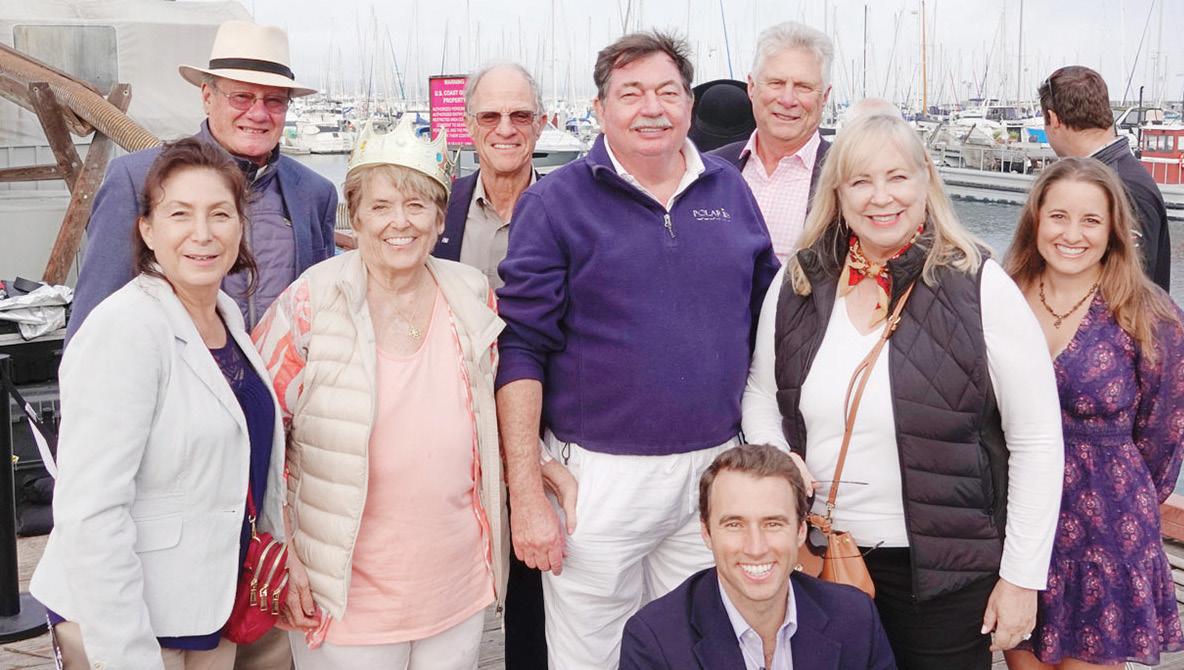
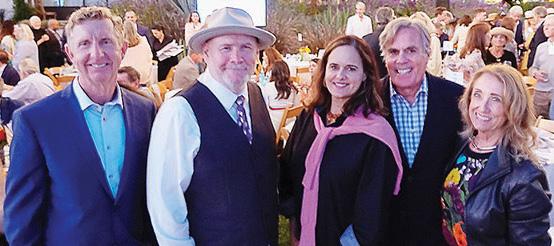
Sarah, who recently bought the 83-foot steel-hulled schooner Mystic Whaler, which boasts 110-foot masts and 3,000 square feet of sail, sailed it up to our tony town’s harbor from its Channel Islands base in Oxnard for a three-week stay, just a tiara’s toss from the Maritime Museum.

To mark the occasion, seven opera singers – Christina Ramsey , mezzo

Enacting the The Pirates of Penzance are Christina Ramsey, Ariana HornerSutherland, Elijah Cineas, Matthew Peterson, Omar Rodriguez, Sunwoo Park, and Kyle Rudolf (photo by Priscilla)
soprano; Kyle Rudolf, tenor; Matthew Peterson, baritone; Ariana HornerSutherland, soprano; Sunwoo Park, soprano; Elijah Cineas, bass baritone; and Omar Rodriguez, baritone – all Chrisman Studio Artists sponsored by the dynamic duo, gave a costumed performance of the 1879 Gilbert and Sullivan two-act comic opera, The Pirates of Penzance, accompanied by pianist Tim Accurso, on board the impressive vessel built in Florida in 1967 and rebuilt in 1993 in Providence, Rhode Island.
It has been renamed Mystic Cruzar, carrying 50 passengers and ten crew, and will be operated by the Chrisman’s non profit Central Coast Ocean Adventures under captain Christine Healy.
It was transported on an ocean freighter from Ft. Lauderdale, Florida, to Ensenada, Mexico, via the Panama Canal.

“It will be available to schools, corpo rate and other groups, and, of course, the Maritime Museum,” says Roger. “Student sailors 5th through 12th grades, accom


panied by teachers and parents, will expe rience voyages of nautical, scientific, and personal discovery.”



Topping off the day was a fireworks display in honor of the 150th anniversary of nearby Stearns Wharf.
Singer Ariana Grande, who bought Ellen DeGeneres and Portia de Rossi’s 1986-built Montecito home, Porter House, constructed out of two trans planted 18th century English barns, for $6.8 million in spring of 2020, has now sold it for $9.1 million.
The 5,500-square-foot two-bedroom, three-bathroom property on 1.35 acres has been bought by Michael Kives, founder of K5 Global, a venture capital firm based in Century City.
It was truly a night on the tiles when the Teddy Bear Cancer Foundation host ed its 20th anniversary Golden Gala

Paid

Oklahoma. Immediately after their wedding they headed out to California to report for duty with the United States Navy at Oxnard, spending a one-night honeymoon in Memphis, Texas, at the Western Hotel on the way out. After his initial time at Oxnard, Jerry was stationed at Key West for two years where his skills were utilized in overseeing the supply chain and logistics of the Naval operations in the region.
Upon successfully completing his duty with the Navy, unfavorable conditions in the energy industry persisted. No stranger to the cyclical nature of the oil business, Jerry concluded he needed to get an education in something else. So he applied to the Harvard Business School, and graduated with an MBA in 1962. He made great friends while at Harvard, and always valued the life-long relationships built there, the rigor demanded by the school, and the analytical frameworks developed in the class room. He remained engaged with the school and was a generous contributor through the years. He and Gretchen then moved to Dallas and he began his career at Republic National Bank, starting as a credit analyst.
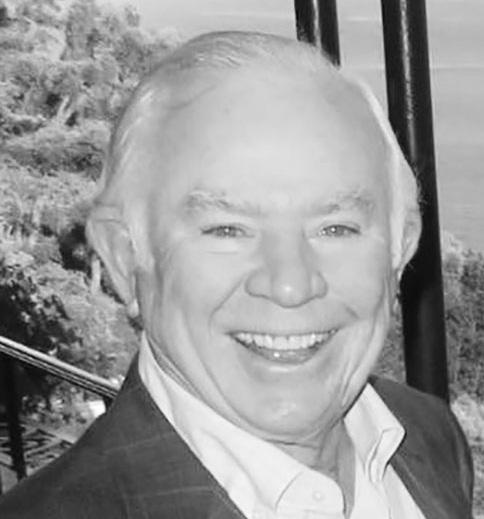
His daughter Jennifer (Jenny) was born in 1963, followed by son Jeff in 1965. He worked long hours at the bank, but he continued to cultivate and enjoy many other pursuits including becoming a licensed pilot. He purchased a Cessna Debonair, and enjoyed flying the family on vacations. He enjoyed time with the family at Lake Texoma, and playing duplicate bridge with Gretchen and a close group of friends during the early years of their marriage. And anyone that was close to Jerry knew he had a love for car pentry and all things mechanical, and could build or repair virtually anything.
Jerry had great success at Republic National Bank. Known as a team player, hum ble, with a strong work ethic, he was also recognized for his ability to solve complex problems and his attention to detail. Many knew of the story of his purchasing a bag of marbles and scattering them across the floors of his new residence under con struction to test the level of the flooring. Always willing to put in the extra effort and hours, he would say, “Success takes a lot of hard work, and there are no shortcuts. It’s just one step at a time. But if you are willing to take responsibility and discharge it properly with as much skill as you have, you will be very successful.” He quickly advanced through the organization and at age 42 he was named President & Chief Operating Officer of Republic of Texas Corporation (later re-named RepublicBank Corporation), and was later named CEO of RepublicBank Corporation, the largest bank holding company in Texas. When Republic merged with First National, Jerry was named Chairman & CEO of First Republic, at its peak the 12th largest bank holding company in the U.S. Just as he exhibited grace and humility on his way up in his career, he was a wonderful example of grace under fire when the state was impacted by both an oil price collapse and a severe contraction in the commercial real estate market, and First Republic required government assistance.
He generously served on the board of directors of numerous public and private com panies as well as nonprofits (on the board or as a trustee) through the years, includ ing Texas Instruments, where he served on the board for over 20 years, Hoblitzelle Foundation, UT Southwestern Medical Foundation, Children’s Medical Foundation, Dallas Citizens Council, State Fair of Texas, Lamplighter School, Hockaday School, and Highland Park United Methodist Church. No doubt he made an invaluable con tribution wherever he served.
This chapter of life brought Jerry great joy as he and Gretchen watched their children marry and the grandchildren start arriving in 1992. They were blessed with nine grand children – Jenny and her husband David had five children, and Jeff and his wife Elizabeth had four children. He loved all his grandchildren beyond compare and took an active interest in their lives. He and Gretchen took them on trips and created memories with them. He had a practice of sitting down with them when they turned 18 to discuss life, the importance of having a plan, and would share a few of his favorite truisms and words of wisdom such as “it is your will not your skill that will help you succeed,” and “plan ahead and you will not get stuck in the past.” His grandchildren sought out his counsel countless times, and valued his input and perspective. He loved his grandchildren, and was able to celebrate and enjoy four great-grandchildren by the time of his passing.
He also developed his love of travel and golf during this period of his life. He and



 Gerald Wayne (Jerry) Fronterhouse
Gerald Wayne (Jerry) Fronterhouse
Gretchen toured around the U.S. in their 45-foot bus and went on many cruises throughout the world. He and Gretchen renewed their vows on their 50th anniversary on a cruise when they were in Hawaii. They also spent more and more time in Carmel and at Monterrey Peninsula Country Club (MPCC) where they developed some very close friends. Jerry enjoyed playing golf several times a week at MPCC. He picked up bridge again, playing weekly with a group of good friends at MPCC. And when in Dallas, he had a regular game at Dallas Country Club with some close friends, and had some surprising successes in club tournaments when teamed with one particular “bud.”
In 2012, Gretchen went home to be with the Lord. Jerry provided great care for her while she was battling pancreatic cancer. In the years after her passing, he was charac terized as always by his determination to keep moving forward, not looking back, and living the best life he could. He kept traveling, being involved with friends and family, further developed his bridge game, and spent as much time in Carmel as possible.
He met the second love of his life, Annette Simmons, at a Christmas Party at Dallas Country Club in 2014, the result of some thoughtful matchmaking by a few good friends. Surprisingly Jerry and Annette had never met despite both residing in Dallas for decades. They quickly bonded, fell in love, and were married on Valentine’s Day in 2016. Friends noted they were the youngest couple in their 80s in the city, and that they seemed to be dating versus married. He and Annette instantly shared a love of travel, constant dinners and events with friends, Dallas Cowboy games, and time in California smartly split between Carmel and Montecito. They both had incredible energy, were much younger than their years, loved people and being around their close friends, and were constantly on the move. They were inseparable. And Jerry grew to love Annette’s daughter Amy and her husband Joe who were very often with them. Annette never left Jerry’s side during his short battle with cancer.
Jerry’s life was marked by action, engagement, service, hard work, great friendships, love for family, great successes, failures, loyalty, humility, integrity, a sense of responsi bility, and a willingness to be in the fight. He was always characterized by optimism, a broad smile and a hearty laugh, and always leaned into what was next. He never ever complained, never changed, and is a great life example for his family.
Jerry’s death was preceded by the deaths of his wife of 53 years, Gretchen Gover Fronterhouse, his parents, Victor and Austa Fronterhouse, and his older brother, Bill Fronterhouse.
He is survived by his wife, Annette Caldwell Simmons, and her children Amy Simmons Crafton and Andy Fleck; his brother, Don Fronterhouse; his daughter Jenny and her husband David Larsen; his son Jeff and his wife Elizabeth; his grand children Brant, Lindsey (and her husband Will Wade), Lauren, Blake, and Laney (and her husband Nicholas Kinnear), Carson (and his wife Katie), Hayden, Alex (and his wife Sarah Kate), and Kara, and four great-grandchildren.
In lieu of flowers, the family requests that memorial donations be made to UT Southwestern Medical Center, the Highland Park United Methodist Church, or the charity of your choice.
on the expansive rooftop of MOXI, the Wolf Museum of Exploration, rais ing around $300,000 from 225 dinner guests, and another 200 guests who came for the after-party with K-LITE DJ Scott Topper providing the throbbing sound.
“It has definitely been a powerful and unique event,” said Dr. Corey Pahanish, the new executive director. “Everybody has been very, very generous.”


The first ever Golden Hero Award went to Donna Barranco Fisher for nearly two decades of service to the foundation, which over the past 20 years has given more than $2.5 million in direct financial assistance to 2,962 individuals and 714 families.
Among the supporters at the sunset soirée, emceed by the ubiquitous Andrew Firestone, were Mayor Randy Rowse, David Edelman, Tino Nuñez, John Palminteri, Dan Encell, Nathan Rogers, Sofie Langhorne, Matthew Fish, Sheela Hunt, Rebecca Koch, Joe McCorkell, Andrew Miller, and Joey Tasca

It was music of a very different kind when Kathryn Martin, President and CEO of the Santa Barbara Symphony, celebrated the tenth anniversary of her half century with an ABBA-solutely fab

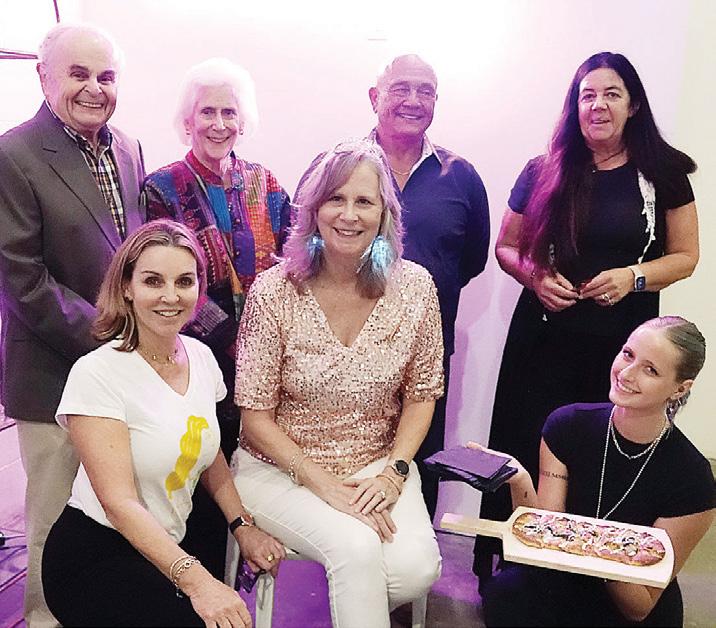

ulous fête for 70 guests at the La Lieff tasting room in the Funk Zone.
Featuring a cover band of the Swedish singers, Abba Dabba Doo! from Ojai, partygoers noshed on oysters and pizzas provided by caterer Ted Ellis, while also dancing to a selection of ‘70s songs from the likes of Donna Summer, the Bee Gees, and Gloria Gaynor.
Among those reliving their youth were Peter Martin , Kostis Protopapas , Juli Askew , Leila Drake , Sybil Rosen , Fred and Nancy Golden , Kathy
The Winnie the Pooh characters
Tigger and Eeyore normally wouldn’t come up in a conversa tion about sexual assault and consent. But at Standing Together to End Sexual Assault (STESA), any method that helps the nonprofit reach youth to achieve its goal of eliminating all forms of sexual violence is worth trying, including refer encing the beloved critters from the A.A. Milne tale.
“Consent is based on choice, free from fear or pressure or manipulation, and the way we define consent for them is that both partners need to communicate with each other that they are knowingly, willingly, and actively agreeing to sexual contact,” explained Executive Director Elsa Granados, who has been part of the movement to end sexual violence since 1985, and the head of STESA (formerly the Santa Barbara Rape Crisis Center)
since 1997. “Everybody knows about the characters from Pooh. What happens when you ask Eeyore to do something?
He says really slowly and mournfully, ‘OK, I guess we can do that.’ If you ask Tigger, he gets very enthusiastic and starts jumping around and saying, ‘Yes. I wanna do that.’ Right? So when you want to have sexual contact with some one, you want a Tigger, not an Eeyore. That’s true consent.”
Christopher Robin and cohorts are just one avenue for educating youth about the subtleties and intricacies of sexual assault and consent offered by STESA, the 48-year-old agency that created the first-ever sexual assault hotline in Santa Barbara in 1974. The hotline is still active, and STESA is still the go-to place for survivors, able to intervene within hours of an assault as well as offer ing counseling to those who may have delayed sharing their stories. STESA’s

WASTEWATER MAIN REHABILITATION FY 2022 Bid No. 4094
1. Bid Submission. The City of Santa Barbara (“City”) will accept electronic bids for its Wastewater Main Rehabilitation FY 2023 Project (“Project”), by or before Thursday, November 17, 2022, at 4:00 p.m., through its PlanetBids portal. Bidders must be registered on the City of Santa Barbara’s PlanetBids portal in order to submit a Bid proposal and to receive addendum notifications. Each bidder is responsible for making certain that its Bid Proposal is actually submitted/uploaded with sufficient time to be received by PlanetBids prior to the bid opening date and time. Large files may take more time to be submitted/uploaded to PlanetBids, so please allow sufficient time to be received prior to the bid due date. The receiving time on the PlanetBids server will be the governing time for acceptability of bids. Telegraphic, telephonic, hardcopy, and facsimile bids will not be accepted.
If any Addendum issued by the City is not acknowledged online by the Bidder, the PlanetBids System will prevent the Bidder from submitting a Bid Proposal. Bidders are responsible for obtaining all addenda from the City’s PlanetBids portal.
Bid results and awards will be available on PlanetBids.
2. Project Information.
2.1 Location and Description. The Project includes rehabilitation of 13,671 linear feet of damaged sanitary sewer main at 54 locations throughout the City. The damaged mains consist of 6 inch, 8 inch, 10 inch, 14 inch, and 18 inch diameter sewer main and will be rehabilitated using sectional liners and cured in place pipe liner (CIPP). Additional work to be completed includes reinstatement of sewer laterals; pre rehabilitation and pre repair sewer main cleaning flushing; pre and post rehabilitation and repair closed circuit television (CCTV) inspections; manhole rehabilitation and lining; manhole channel repair; replacement of manhole frame and covers; removal of existing manhole ladder rungs; and sewer lateral corrective connection. Contractor shall be responsible for restoration of site conditions to pre construction conditions, including pavement, landscaping, and any disturbed or damaged hardscape within easements (including but not limited to fencing, walls, and decorative rocks/boulders); traffic control as necessary to protect public safety; sewer bypassing as necessary to construct repairs; implementation of erosion and sedimentation control measures to meet City requirements for protection of water quality; trimming or removing vegetation and other obstructions as necessary to properly access and perform Work within easements; and obtaining all necessary permits and utility coordination as necessary to perform the work.
2.2 Time for Final Completion. The Project must be fully completed within 165 working days from the start date set forth in the Notice to Proceed. City anticipates that the Work will begin on or about January 2023, but the anticipated start date is provided solely for convenience and is neither certain nor binding.
2.3 Estimated Cost. The estimated construction cost is $1,800,000
3. License and Registration Requirements.
3.1 License. This Project requires a valid California contractor’s license for the following classification(s): Class A General Engineering.
3.2 DIR Registration. City may not accept a Bid Proposal from or enter into the Contract with a bidder, without proof that the bidder is registered with the California Department of Industrial Relations (“DIR”) to perform public work pursuant to Labor Code § 1725.5, subject to limited legal exceptions.
4. Contract Documents. The specifications, exhibits, bid forms and contract documents for the Project, and any addenda thereto (“Contract Documents”) may be downloaded from City’s website at: http://www.planetbids.com/portal/portal.cfm?CompanyID=29959 A printed copy of the Contract Documents may be obtained from CyberCopy Shop, located at 504 N. Milpas Street, Santa Barbara, CA 93103, at (805) 884 6155.
5. Bid Security. The Bid Proposal must be accompanied by bid security of ten percent of the maximum bid amount, in the form of a cashier’s or certified check made payable to City, or a bid bond executed by a surety licensed to do business in the State of California on the Bid Bond form included with the Contract Documents. The bid security must guarantee that within ten days after City issues the Notice of Award, the successful bidder will execute the Contract and submit the payment and performance bonds , insurance certificates and endorsements, and any other submittals required by the Contract Documents and as specified in the Notice of Award.
6.1 General. Pursuant to California Labor Code § 1720 et seq., this Project is subject to the prevailing wage requirements applicable to the locality in which the Work is to be performed for each craft, classification or type of worker needed to perform the Work, including employer payments for health and welfare, pension, vacation, apprenticeship and similar purposes.
6.2 Rates. These prevailing rates are on file with the City and are available online at http://www.dir.ca.gov/DLSR. Each Contractor and Subcontractor must pay no less than the specified rates to all workers employed to work on the Project. The schedule of per diem wages is based upon a working day of eight hours. The rate for holiday and overtime work must be at least time and one half.
6.3 Compliance. The Contract will be subject to compliance monitoring and enforcement by the DIR, under Labor Code § 1771.4.
7. Performance and Payment Bonds. The successful bidder will be required to provide performance and payment bonds, each for 100% of the Contract Price, as further specified in the Contract Documents.
8. Substitution of Securities. Substitution of appropriate securities in lieu of retention amounts from progress payments is permitted under Public Contract Code § 22300.
9. Subcontractor List. Each Subcontractor must be registered with the DIR to perform work on public projects. Each bidder must submit a completed Subcontractor List form with its Bid Proposal, including the name, location of the place of business, Cali fornia contractor license number, DIR registration number, and percentage of the Work to be performed (based on the base bid price) for each Subcontractor that will perform Work or service or fabricate or install Work for the prime contractor in excess of one half of 1% of the bid price, using the Subcontractor List form included with the Contract Documents.
10. Instructions to Bidders. All bidders should carefully review the Instructions to Bidders for more detailed information before submitting a Bid
11.
FICTITIOUS BUSINESS
NAME STATEMENT: The following person(s) is/are doing business as: Golden Estate Management, 4810 Sawyer Avenue, Carpinteria, CA 93013. Rob ert P Herman, 4810 Sawyer Avenue, Carpinteria, CA 93013. This statement was filed with the County Clerk of Santa Barbara County on September 27, 2022. This statement expires five years from the date it was filed in the Office of the County Clerk. I hereby certify that this is a correct copy of the orig inal statement on file in my office. Joseph E. Hol land, County Clerk (SEAL). FBN No. 2022-0002392.
Published October 12, 19, 26, November 2, 2022
FICTITIOUS BUSINESS
NAME STATEMENT: The following person(s) is/ are doing business as: Farm to Fork Social Club Catering, 480 Toro Canyon Road, Santa Barbara, CA 93108. Joseph W Cordero, 480 Toro Canyon Road, Santa Barbara, CA 93108. This statement was filed with the County Clerk of Santa Barbara County on September 30, 2022. This statement expires five years from the date it was filed in the Office of the County Clerk. I hereby certify that this is a correct copy of the original state ment on file in my office. Joseph E. Holland, County Clerk (SEAL). FBN No. 2022-0002437.
Published October 12, 19, 26, November 2, 2022
FICTITIOUS BUSINESS NAME STATEMENT: The following person(s) is/are doing business as: Tierra Costa, 2030 Edison Street, Santa Ynez, CA 93460. TC Land scaping Services, LLC, 1883 West Royal Hunte Drive, Cedar City, UT, 84720. This statement was filed with the County Clerk of Santa Barbara County on September 28, 2022. This statement expires five years from the date it was filed in the Office of the County Clerk. I hereby certify that this is a correct copy of the original state ment on file in my office. Joseph E. Holland, County Clerk (SEAL). FBN No. 2022-0002408. Published October 12, 19, 26, November 2, 2022
FICTITIOUS BUSINESS NAME STATEMENT: The following person(s) is/are doing business as: Solar-Link, 27 West Anapamu Street, #454, Santa Barbara, CA 93101. Evolution Sustainable Industries, Incorporated, 27 West Anapamu Street, #454, Santa Barbara, CA 93101. This statement was filed with the County Clerk of Santa Barbara County on September 16, 2022. This statement expires five years from the date it was filed in the Office of the County Clerk. I hereby certify that this is a correct copy of the original statement on file in my office. Joseph E. Holland, County Clerk (SEAL). FBN No. 20220002309. Published October 5, 12, 19, 26, 2022
FICTITIOUS BUSINESS NAME STATEMENT: The following person(s) is/are doing business as: Solar-Link; Solar-Link Crowd Funding; Solar Farmers of America; Solar Scouts; Fan Funded, 27 West Anapamu Street, #454, Santa Barbara, CA 93101. Evolution Sustainable Industries, Incorporated, 27 West Anapamu Street, #454, Santa Barbara, CA 93101. This statement was filed with the County Clerk of Santa Barbara County on September 16, 2022. This statement expires five years from the date it was filed in the Office of the County Clerk. I hereby certify that this is a correct copy of the original statement on file in my office. Joseph E. Holland, County Clerk (SEAL). FBN No. 2022-0002309. Published October 5, 12, 19, 26, 2022
FICTITIOUS BUSINESS
NAME STATEMENT: The following person(s) is/ are doing business as: IGEEKS SB, 522 West Canon Perdido, 44, Santa Barbara, CA 93101. Christian C Martinez, 522 West Canon Perdi do, 44, Santa Barbara, CA 93101. This statement was filed with the County Clerk of Santa Barbara County on September 23, 2022. This statement expires five years from the date it was filed in the Office of the County Clerk. I hereby certify that this is a correct copy of the original state ment on file in my office. Joseph E. Holland, County Clerk (SEAL). FBN No. 2022-0002370. Published September 28, October 5, 12, 19, 2022
FICTITIOUS BUSINESS
NAME STATEMENT: The following person(s) is/are doing business as: Thyne Talent Agency, 205 East Carrillo Street, Suite 100, Santa Barbara, CA 93101.
“Every day the clock resets. Your wins don’t matter. Your failures don’t matter.” – Sean Higgins
JohnJThyne, 205 East Carrillo Street, Suite 100, San ta Barbara, CA 93101. This statement was filed with the County Clerk of Santa Barbara County on Sep tember 22, 2022. This statement expires five years from the date it was filed in the Office of the County Clerk. I hereby certify that this is a correct copy of the original statement on file in my office. Joseph E. Hol land, County Clerk (SEAL). FBN No. 2022-0002361.
Published September 28, October 5, 12, 19, 2022
FICTITIOUS BUSINESS
NAME STATEMENT: The following person(s) is/ are doing business as: Yankee Solutions, 803 Portesuello Ave, Santa Barbara, CA 93101-3930. Robert Cuellar, 3950 Via Real #272, Carpinteria, CA 93013. Paul E. Cuellar, 803 Portesuello Ave, Santa Barbara, CA 93101-3930. This statement was filed with the County Clerk of Santa Barbara County on September 20, 2022. This statement expires five years from the date it was filed in the Office of the County Clerk. I hereby certify that this is a correct copy of the original state ment on file in my office. Joseph E. Holland, County Clerk (SEAL). FBN No. 2022-0002339.
Published September 28, October 5, 12, 19, 2022
FICTITIOUS BUSINESS
NAME STATEMENT: The following person(s) is/ are doing business as: VIP Smoke Shop, 124 E. Ocean Ave, Lompoc, CA 93111. Porterville Tool ShopInc, 124 E. Ocean Ave, Lompoc, CA 93111. This statement was filed with the County Clerk of Santa Barbara County on September 13, 2022. This statement expires five years from the date it was filed in the Office of the County Clerk. I here by certify that this is a correct copy of the original statement on file in my office. Joseph E. Holland, County Clerk (SEAL). FBN No. 2022-0002277.
Published September 21, 28, October 5, 12, 2022
CITATION FREEDOM FROM PARENTAL CUS TODY AND CONTROL (ABANDONMENT) (RE: ADOPTION): CASE No. 20CCAD00678. To Lisa Megan Sela and all persons claiming to be the father or mother of Maria Luisa Sela. By order of this Court you are hereby cited and may appear before the Judge Presiding in Department 419 of the Superior Court of California, County of Los Angeles, located at Children’s Court 201 Centre Plaza Drive, Monterey Park, CA 91754 on Novem ber 14, 2022 at 9 am of that day, then and there to show cause, if any you have, why said person should not be declared free from the control of his/her (their) parental rights according to the petition on file herein. You are hereby notified of the provisions of Family Code 7860 which provide the judge shall advise the minor and the parents, if present, of the right to have counsel present. The Court may appoint counsel to represent the minor whether or not the minor is able to afford counsel, and if they are unable to afford counsel, shall appoint counsel to represent the parents. The petition filed herein is for the purpose of freeing the subject child for placement for adoption. Filed September 22, 2022 by Sherri R Carter, Execu tive Officer/Clerk of Court by L. Melara, Deputy. Published September 28, October 5, 12, 19, 2022.
CITATION FREEDOM FROM PARENTAL CUSTODY AND CONTROL (ABANDONMENT) (RE: ADOP TION): CASE No. 20CCAD00679. To Lisa Megan Sela and all persons claiming to be the father or mother of Max Sela. By order of this Court you are hereby cited and may appear before the Judge Presiding in Department 419 of the Superior Court of California, County of Los Angeles, located at Children’s Court 201 Centre Plaza Drive, Monterey Park, CA 91754 on November 14, 2022 at 9 am of that day, then and there to show cause, if any you have, why said person should not be declared free from the control of his/her (their) parental rights according to the petition on file herein. You are hereby notified of the provisions of Family Code 7860 which provide the judge shall advise the mi nor and the parents, if present, of the right to have counsel present. The Court may appoint counsel to represent the minor whether or not the minor is able to afford counsel, and if they are unable to afford counsel, shall appoint counsel to represent the par ents. The petition filed herein is for the purpose of freeing the subject child for placement for adoption.
Filed September 22, 2022 by Sherri R Carter, Exec utive Officer/Clerk of Court by L. Melara, Deputy. Published September 28, October 5, 12, 19, 2022.
housing and development fights.”
Roden puts it bluntly: “The Montecito Association exists to preserve property values, full stop. End of story.”
And if he’s right, according to Das Williams, the Montecito Association has little to worry about in terms of increasing local development changing the town’s character. “A lot of people in town are very scared that density is going to increase in Montecito, but it’s not,” he says. “Density is actually falling in Montecito.”
Williams tells me it’s a combination of the increase in the second homes Byrne mentioned, and the fact that some homeowners are buying multiple lots, knocking down a few houses, and building a single, much larger home. There are fewer people liv ing in Montecito than there were 10 years ago. In addition to this minor dip in population, Montecito has also recently undergone a shift in attitude. “Before the debris flow, the dominant political value in Montecito was that of the aesthetic,” says Williams. “The debris flow caused people to care, at least equivalently, about safety.”
In the wake of the January 2018 debris flows that claimed the lives of 23 Montecitans, significant work has gone towards expanding debris basins in preparation for future events. “The San Ysidro debris basin is pretty small, like 10,000 cubic meters,” says Williams. “And the Randall Road one, which is now in the same water shed, is about 50,000. That didn’t exist before the debris flow.” And while these expansions in capacity are improvements, they are not catch-all solutions. “Flooding control improve ments would not stop a debris flow of the size [we had in 2018],” says Williams. “But it would reduce the amount of rocks and trees; those are what kills people and destroys houses. So even if you don’t stop an event of that size, you reduce the lethality.” These adaptations are a start, but Williams believes there is more work to be done.
As for Roden’s idea of adding lan guage to the Montecito Association Charter regarding sustainability and resilience, the benefit to such action remains unknown. “Any effort to do that, I applaud,” says Steed. “I think it’s an uphill battle.”
Byrne doesn’t think it’s necessary. “I think by creating a sustainability com mittee, we’ve committed to it, right?” she says. “We’ve already had a couple of meetings and started laying out what it is we think we can do. Part of it is to support the efforts of resilience and sustainability that are already under way, not to reinvent the wheel, but to really get behind recycled water and drought-tolerant landscaping.”
The Montecito Association Sustainability Committee, created at
the behest of Roden, was launched four months ago. The hope is that it will allow for a dedicated space to explore sustainable ideas and provide a voice towards their integration into the fab ric of daily Montecito life. “And then we could take that even further, say, hey Montecito Board of Architectural Review and Montecito Planning Commission, we’d like to see more of the United Nations sustainable develop ment goals incorporated into your land use goals,” says Byrne.
Local boards of architectural review hold large quantities of power over community development, transit, and housing projects, so shifting their focus can have profound impacts. Leading with a guideline of community sustain ability is a good place to start.
Another approach towards building a community dialogue that can lead to action surrounding sustainability is being explored by Wright and the CEC. In the midst of their recent capital fundraising, CEC lost the lease on their former offices. Now, they are working on building a new office space that will double as a community hub on State Street in the Arts District. “A place where we can do all the network building,” says Wright. “It has a com munity room in it that should be able to seat about 75 people in a meeting. It also can serve as an after-hours event space.” A project such as this, geared towards bringing the community physi cally together around progressive action, brings me hope.
It becomes clear from my conversa tions that this is a town that cares deeply about itself and is willing to put the work in to preserve its quality of life and longevity. My discussions with these community leaders left me more con vinced than ever that any action towards climate adaptation – constructing solar panels, purchasing local energy from renewable providers, reducing water usage, creating opportunities for local workers to live locally — all are valiant and worthwhile endeavors.
On the idea of the Montecito Association’s Charter growing to include sustainability as a key tenet along with protecting Montecito’s semi-rural envi ronment, I vote yes — even though I’m not a member of the board. What’s your vote?
full-time staff of four hotline responders and case managers along with dozens of volunteers can support both women and men with services that include medical and legal advocacy, reporting options includ ing accompaniment for an assault-related issue, and mental health counseling as well as information and referrals.
With school back in session and students mask-free and nearly back to normal – as opposed to during the height of the pan demic, when STESA did its presentations over Zoom, and kids with questions or issues could contact the staff members as easily as positing a private message in a chat box –Granados has a particular focus on making sure that local youths are aware of STESA’s services and feel comfortable reaching out.
“We have intervention and prevention programs that are specifically designed for youth, even including teen support groups when enough of them want that,” she said. “And all of our services to teens are completely free of charge.”
In addition to sexual assault and consent courses, STESA provides self-defense classes

Asher Radziner is a Junior at Brown University, concentrating in Conservation Science and Policy. He works to find environmental solutions and unite people across boundaries.

The prevention side finds STESA going to classrooms, schools, and youth service organizations such as Boys & Girls Club and AHA!, Granados said. “Wherever youth are, we provide presentations full of information and resources, everything from a one-time appearance to a 10-week course about both how to access our services and how to prevent sexual assault. It’s all about changing mindsets, particularly those ado lescents who are still developing their sense of relating to each other and learning their own boundaries. We talk about gender stereotypes, the myths and truths about sexual assault, and how to support a survi vor because their friends are often the first person a teen will confide in.”
As indicated by Eeyore and Tigger, the STESA presenters also talk about consent, not only the definition, but also what it means on a practical level and how to obtain consent in everyday interactions without making it awkward or formal.
There are also self-defense classes designed specifically for youth that include awareness about the issue of sexual assault while also teaching assertiveness.
“Most of self-defense has to do with how one communicates verbally and non-verbally in addition to any physi cal techniques, which are hopefully not something anyone should have to use,” Granados said.
STESA youth programs also reach out to adults to support parents with examples of how to talk with teens about sexual assault, consent, and boundaries.
“We would love to do that more because what we are able to communicate to parents and PTA organizations just serves to reinforce at home the messages kids hear from us,” Granados said.
STESA’s ability to broadly confront sexual assault as a society-wide issue from the full spectrum perspective of interven tion, prevention, and education aspects is part of what has made the nonprofit such a vital resource for nearly five decades.
Donations to support STESA’s work in its ongoing mission are always needed, Granados said, including ones earmarked for its annual campaign for national Sexual Assault Awareness Month, which returns in April. But even those with limited financial resources can make a big difference through volunteering, she said.
“We lost quite a few during the pan demic, as people were staying away from each other as they tried to navigate COVID,” she said. “We need people to volunteer on our hotline, answering calls, and help us provide services. That really helps us extend our reach.”
Standing Together to End Sexual Assault Executive Director: Elsa Granados
E. Canon
963-6832
St.
15
Santa Barbara Choral Society, which is celebrating its 75th anniversary and the 30th anniversary of its artis tic director and conductor Jo Anne Wasserman, hosted a donor appreci ation and season kickoff bash in the Lobero Theatre Courtyard.



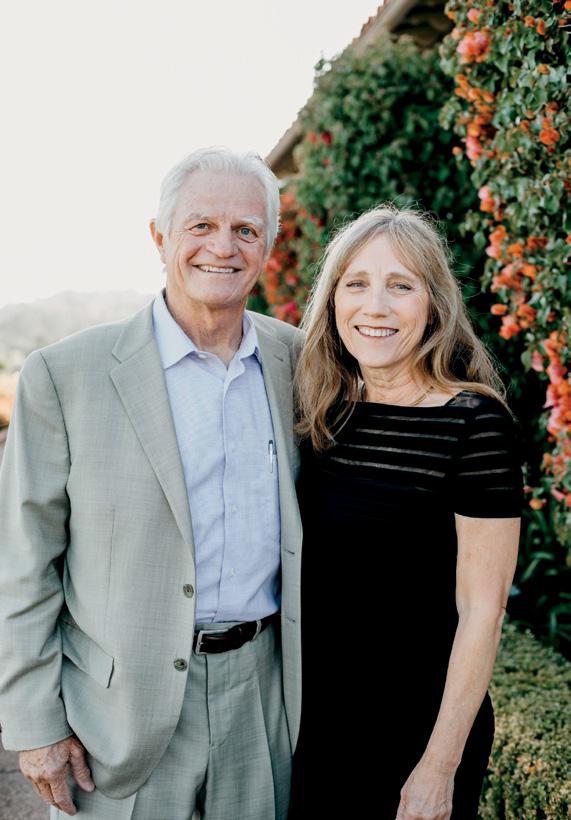
On Saturday the choir will be join ing 150 other performers, includ ing Quire of Voyces, the State Street Ballet, and the Music Academy’s Children’s Chorus, at the Granada for Carl Orff’s classic Carmina Burana , the opening night of the Santa Barbara Symphony’s season under maestro Nir Kabaretti
In December, the singers host the popular Hallelujah Project at the Lobero, with Music Academy presi
dent Scott Reed in the rocking chair with his daughter for the ever-popu lar ‘Twas the Night Before Christmas , wrapping in May with Mozart to Modern.
Joining in the fun were Nina Dunbar, Barbara Burger, Brooks Firestone, Mark Whitehurst and Kerry Methner, Nancy Golden, Todd Aldrich, and Tim Accurso
Department of Energy and NREL to develop the Liberty Wind Turbine, featur ing advanced drive train and controls. In December 2010, Dehlsen sold Clipper Windpower to United Technologies Corporation (UTC), which in 2020 merged with Raytheon Corporation to form Raytheon Technologies.
Dehlsen describes SeaWell’s approach to desalination, noting, “As with wind turbines, SeaWell is based on modular, assembly-line-built systems, designed for water affordability and to be a benign presence in the ocean that can be quickly put into operation.”


Obviously, what SeaWell needs now is a working pilot program to build and demonstrate the SeaWell system, in partnership with a thirsty customer. It would be even better if that partner had the clout to fast-track permitting through the punishing labyrinth of the state water approval process.
Choral Society Supporters Hazel and John Blankenship (photo by Priscilla)
Choral performers Suzannah Ruth, Will Breman, Steven Thomson, and April Amante (photo by Priscilla)
Vandenberg Space Force Base in Santa Barbara County needs roughly three million gallons of fresh water a day for missile launch cooling and human consumption for its 10,000 workers on-base, plus another 2,600 military dependents. Today, it relies on the unreliable State Water Project and on-site wells.
Of the 102 military bases identified as “at risk for water scarcity” by the Government Accountability Office (GAO) in 2020, Vandenberg was the only base that failed in all six water assessment categories.
“We are pleased that SeaWell has prioritized Vandenberg for this project. Water is essential for mission-critical and support activities, and reliability of this new water supply has the potential to substantially backstop our current drought-prone sources,” said Ken Domako, Vandenberg’s Chief of Portfolio Optimization.
The Vandenberg SeaWell project would be located offshore of the Base’s original Space Launch Complex, which dates back to the 1950s and is now inactive. Proximity to the shoreline makes it ideal to accommodate a SeaWell Water Station, which would be connected to Vandenberg’s 20-megawatt solar energy microgrid. The SeaWell sys tem would ensure a dependable supply of water, which is critical to the launch process and the Space Force Base security concerns.
Vandenberg is working with a SeaWell subsidiary, Ocean Portal Water Company of California, which develops tailored water supply projects using SeaWell Buoys, coor dinated with customer needs, for project delivery. Ocean Portal’s mission is to provide water to military, municipal, or water districts seeking a long-term supply contract as a reliable backup to State Water and over-drafted groundwater basins.

SeaWell is seeking some $6.5 million in private equity funding, paired with Department of Defense grants, for the engineering and permitting of the Vandenberg “Ocean Portal One Project.” A second project in Santa Barbara County is nearing finalization. As SeaWell and California water agencies are well aware, “The drought waits for no one.”
It was President John F. Kennedy, who noted in 1962, “If we could produce fresh water from salt water at a low cost, that would indeed be a great service to humanity, and could dwarf any other scientific accomplishment.”
early 2020 before the pandemic put a big pause on those plans. Now, Ohyama and Beilman are back, along with pianist Lucille Chung and cellist Edward Arron, for a soft relaunch on October 18 at the Lobero, playing Dvořák’s “Piano Trio No. 4 in E Minor ‘Dumky’ Op. 90,” and Fauré’s “Piano Quartet No. 1 in C minor, Op. 15,” as a preview to a planned weekend festival at the Lobero in May. Info at (805) 9630761 or lobero.com.
The Play That Goes Wrong began life in 2012 in a British pub as a frothy vehicle for its three writers to star in. But the com edy about amateur actors attempting to mount a fictional murder mystery called The Murder at Haversham Manor that goes hopelessly awry, chock full of pranks and pratfalls and all sorts of slapstick, soon found great success on both sides of the pond – winning an Olivier Award in London, where it’s still playing, and taking home an Audience Choice Award when it hit Broadway a couple of years ago.
Critics have almost universally praised the play as hysterically funny, but then seem to think they need to issue cautions, such as the L.A. Times’ note that it’s best for those whose “brains are sitting under an umbrella on the beach.”




Saundra McClain, who has helmed a number of productions at Ensemble Theatre in recent years before taking on SBCC Theater Group’s area debut of The Play That Goes Wrong opening this week end, has no problem with that assessment.

“If you’re coming to see high drama, this isn’t the play for you,” she said. “But for pure escapism and having a good time, it’s just so much fun to see every thing just fall apart.”

That includes the set, the props, the lighting, and the sound as well as actors flubbing their lines, missing entrances and exits and even going rogue.
“Everything and anything that could go wrong in any theater production anyone has ever done anywhere is in this play,” McClain said.
But while the audience barely has a moment to recover from laughing before another snafu arises, that doesn’t mean McClain and her cast don’t take their own roles seriously.
“The actors in the murder mystery are actually doing their best to make sure that the play gets to its rightful ending, so my cast has to approach it like the char acters they’re playing would, determined that the show must go on.”
Things get so out of hand that the set becomes its own character and the audi ence turns into active participants, the director said.

“Not only do the actors break the fourth wall, they smash it.”
McClain said she spent a lot of time with the cast on safety measures, as well as work ing with the technical director to make sure that everything that is supposed to go wrong in the play does, while also avoiding unintentionally adding to the mayhem.
“A lot of rehearsal time was spent work ing on stunts even before we finished character development,” she said.
On the other hand, if there is a prob lem, would the audience even know?
“I doubt it,” McClain said.
There’s also little to no doubt that the audience will have a great time, as long as they’re not expecting Shakespeare, or even Noel Coward.
“Directing it has been one of the most enjoyable experiences I’ve ever had in the theater,” she said. “It’s a real blast.”
The Play That Goes Wrong runs October 12-29 at the Garvin Theatre on SBCC’s West Campus. Visit theatregroupsbcc. com or call (805) 965-5935.



Given that Abraham Lincoln might be the most popular president in U.S. history, one whose story is the stuff of legends, it would seem there isn’t a whole lot left to tell about Abe. And even less likely, that a practicing insurance litigator would be the one to tell it.
Yet, here’s Terrence L. Cranert, an attorney who grew up in Lincoln Country and stud ied composing musicals alongside his friend Howard Ashman at Lehman Engel’s BMI Musical Theater Workshop in New York, who has written the book, lyrics, and music for The Lincolns of Springfield, which has its professional world premiere at the Center Stage Theater October 12-23. Call (805) 963-0408 or visit centerstagetheater.org.
On Entertainment Page 504
Han Do, Matthew Tavianini, Justin Davanzo, and McKenna Kline in SBCC’s production of The Play That Goes Wrong (photo by Ben Crop)

Billed as the love story we never knew, the musical chronicles the story of Lincoln through his relationship with his beloved wife, Mary Todd Lincoln, from their first meeting through the Civil War and his assassination.
The relationship between Mary Lincoln and her closest friend and confidante, former slave, and dressmaker Elizabeth Keckley, played by Mary Millben, is piv otal to the story. As Mary’s dearest friend, Elizabeth is privy to Mary’s most intimate and private history and is thus the ideal storyteller for the show.
“It’s a great story of how a woman from the Southern aristocracy ended up with this guy from the backwoods of Illinois and how the two of them came together and ended up saving the country and freeing people,” explained Cranert, who previously composed the musicals Joan of Arc, Pinocchio in Tinsel Town, and When the Fat Lady Sings and was associate pro ducer of the Broadway productions of A Night With Janis Joplin. Viewing Lincoln through the eyes of his wife and her closest friend provides a twist, the idea inspired by a historical novel Cranert read that said history makes more sense when you put the women back in. Earlier productions of The Lincolns of Springfield have praised the songs as akin to Broadway faves Rodgers & Hammerstein and Lerner & Loewe, a ref erence Cranert enjoys as he intended to create a classic musical that would recall Broadway’s heyday.
“Everything today is either an adapta tion or a jukebox musical. I wanted to make something original.”
The all-Equity cast features musical

theater veterans, while director Corey Brunish is a four-time Tony winner whose productions include Beautiful: The Carole King Musical
While he’s been working on The Lincolns ever since his time at BMI, Cranert believes it’s also a musical for our times.
“Right now is the closest to a big divide the country has faced since the Civil War,” he said. “But no matter what side of the political spectrum you’re on, every body thinks highly of Lincoln. Hopefully it will be unifying and help bring people together and, as Lincoln said, bind up the nation’s wounds.”
Musical overkill October continues this week with blues/R&B veteran Robert Cray performing at the Solvang Festival Theater on October 14, the same night that country star Tim McGraw headlines the Boots & Brews festival at Seaside Park in Ventura. Legendary folksinger Judy Collins headlines a mighty double bill featuring pop-rock songstress Sophie B. Hawkins at Ojai’s Libbey Bowl on October 16, while confessional singer-songwriters Jesse DeNatale and Jackie Bristow share the stage at Santa Ynez’s Maverick Saloon for Tales From The Tavern on October 19.
Closer to home, UCSB’s Campbell Hall turns into ground zero on October 15 for the Linda Lindas, whose viral anti-hate anthem “Racist, Sexist Boy” made the L.A.based all-female teen punk band an instant sensation, and Canadian singer-songwriter Carly Rae Jepsen asks you to call her, maybe, at the Arlington Theatre on October 20… Maui’s Nā Hōkū Hanohano Awardwinning electric ukulele jam band Kanekoa do their originals-plus-rafty covers thing at SOhO on October 17, and fledgling Santa Barbara Records has a singer-songwriter showcase at the club the next night.
Steven Libowitz has covered a plethora of topics for the Journal since 1997, and now leads our extensive arts and entertainment coverage

16 local organizations – from the Ritz-Carlton, Ojai Valley Inn, Lucky’s, Joe’s Cafe, to Montecito Barbers. Winners of the event will be posted on the website. Longtime event supporters are its Event Chair Bill Cordero Sr. and emcee Drew Wakefield , Connor Limont , with the Sarah Lee Pascoe Foundation and Michael Valpredo Sponsors are AndNowUKnow, Bako

Sweet, Brophy & Sons, Community West Bank, Cordero Painting Company, Cordero Real Estate, Cox Communications, David & Louise Borgatello, ExxonMobil, Farmers & Merchants Bank, FreshSource, Pajadoro Family Foundation, Taylor Farms, The Ann Jackson Family Foundation, and The NewtMont Foundation.

more information.
stvincents-sb.org

Carmen Jones, the Oscar Hammerstein musical that opened the latest season of the Ensemble Theatre Company at the New Vic, took two years to come to fru ition given the pandemic delays, but it was clearly worth the wait!

Directed by Artistic Director Jonathan Fox, the hugely entertaining show fea turing an all-Black cast and based on Bizet’s opera Carmen, delights from beginning to end with Fredericka Meek as the seductive principal character and Christopher James Hester as her besot ted misguided beau.
With a talented supporting cast of Zelda Carmen, Nataley Carter, Ashli Ferguson, Michael Howard-Dossett, Constance Jewell Lopez , Desmond Newsom , Chauncey Packer , and Troy D. Wallace, the four-act produc tion can’t fail to please with a six-member band under conductor-pianist William Foster McDaniel perched loftily above the action starting in a parachute factory in the early 1940s.
Kudos goes to scenic and lighting designer François-Pierre Couture and choreographer Lisa Ruffin

The show runs through October 23.

Prince Harry and wife Meghan
Markle have parted ways with their Beverly Hills-based PR agency, Sunshine Sachs, which also represents the Santa Barbara International Film Festival.
The Duchess of Sussex has worked with the company since her days on the TV show Suits and is a friend of senior partner, Keleigh Thomas Morgan
The PR chief was invited to the royal wedding at St. George’s Chapel, Windsor, in May 2018, and has also represented actor Tyler Perry, whose Los Angeles mansion the Sussexi used as a base while house-hunting.
Sunshine Sachs played a major role when the tony twosome moved to the Left Coast, allowing them to take advantage of contacts, and a network of advisors and celebrities.

Morgan, 45, also helped on the duo’s 2019 Africa tour, while they were still working royals.
Publicity will now be handled by their charitable foundation Archewell where communications are overseen by Silicon Valley bigwig Christine Schirmer
In the meantime, according to reports, the Riven Rock couple are scrambling docu mentary and Harry’s now delayed PenguinRandom House ghost-written memoir, after being involved in ceremonies following the
Michael and Lisa Amador, longtime members of the Santa Barbara Polo & Racquet Club, have taken over the man agement of the club’s eatery now renamed as Fieldside, which reopens next month.
The dynamic duo have owned many successful restaurants in our Eden by the Beach, including Uncorked and the Nook in the Funk Zone.

Lisa also owns a successful match making business and will be helping her husband with the new venture.
Local journalist Bonnie Carroll has been presented with the 2022 Association for Women in Communications Clarion Award.
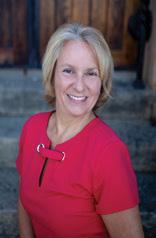
She is among more than 50 other national award recipients, including the International Matrix winner Tara Gatewood and the International Crystal Award winner Wolters Kluwer
Bonnie’s work as an editor of a nonprof it online-print newspaper Successful Aging won her the award, which was presented to her by national chair Anita Parran at a conference in Kansas City, Missouri.
Michael Young, a retired college admin istrator who served as vice chancellor for student affairs at UCSB for 25 years, has joined the board of directors of the Scholarship Foundation of Santa Barbara.
Young earned a BA in history at Beloit College in Wisconsin, a master’s degree in history at the University of Michigan, and a doctorate in higher education administration at the University of Iowa.
He went on to serve as associate dean at
Wesleyan University before being named to his student affairs position at UCSB, overseeing 25 departments.
Since retiring from UCSB in 2015, Young has twice served as interim vice president for student affairs at Sonoma State University.
Currently a Santa Barbara Foundation trustee and board director for Sanctuary Centers of Santa Barbara, he previously served on boards for United Way of Santa Barbara County and Sansum Clinic.
On a personal note, I remember Christopher Story, founder of the West Coast Symphony Orchestra, who has died aged 97. An affable eccentric, Christopher was a familiar sight with his baton at innu merable concerts at the United Methodist and Trinity Episcopal churches.
He was also founder and music director emeritus of the Cielo Foundation for the Performing Arts. In recent years he was helped immeasurably by Westmont College music professor Michael Shasberger, now retired and living in Roanoke, Virginia.

Ellen DeGeneres and actress wife, Portia de Rossi, noshing at Tre Lune... Actor Ryan Gosling shopping at Whole Foods… Actress Laura Dern checking out Merci Montecito.
Pip! Pip! Be safe, wear a mask when necessary, and get vaccinated.
From musings on the Royals to celebrity real estate deals, Richard Mineards is our man on the society scene and has been for more than a decade
Funk Zone Art Fun – Patricia Clarke calls her California Redwood series of photographs “Primal Wild” as they portray a deep dive into the natural world via analog images taken exclusively with a plastic Holga camera to reflect a yearning for the quiet and wisdom of our ancient, majestic forests. New imag es in the Redwood series from the international award-winning photographer – which capture the magnificent trees that are under threat from wildfires and drought – are on display at Silo 118, which has an opening reception 5-7 pm on Saturday, October 15, and an artist talk with Houghton on October 29.
WHEN: October 14 - 29
WHERE: 118 Gray Ave.
COST: free
INFO: (301) 379-4669 or silo118.com
WHEN: 6-9 pm
WHERE: 48 Helena Ave.
COST: $15 at the door INFO: (805) 451-8178 or helenamasonartgallery.com
Ghosts Along the Coast – With all its nooks and crannies, Elings Park, the 230-acre space just across the street from the Douglas Family Preserve on the Mesa, can be a bit eerie in the evenings. This weekend, Elings, which is the largest community-supported nonprofit public park in America, one best-known for hiking/mountain biking trails, paragliding, dog parks, baseball, and soccer, segues into spine-tingling storytelling with its first annual Ghosts Along the Coast, a ghastly guided walking tour at Godric Grove in the park’s highest elevation. Each guided tour makes six stops to visit with the deceased costumed characters who may have been actual figures in Santa Barbara history. The six restless spirits who return to recount the stories of their lives and untimely demises include a female bootlegger from Prohibi tion, a Depression-era hobo living near the railroad tracks, a survivor of an 1853 shipwreck, a Japanese “picture bride” from the 1920s, a longtime lady lighthouse keeper, and a newspaper editor murdered in 1880. Each tour stop takes place at separate lighted vistas positioned under shadowy trees in Godric Grove, and while the walk is short, the pathways are not well lit, so guests are strongly urged to bring flashlights or cell phones to help illuminate their way along the 90-minute tour led by Elings Park’s “Ghost Hunters” who also share tidbits of local history, including facts about the park itself. The event is the brainchild of Dean Noble, Elings’ Executive Director who previously created the science-meets-improv Zoo’s Line is it Anyway when he had the same position at the Santa Barbara Zoo. WHEN: Tours begins every half hour from 7-9 pm on Thursday, Friday, and Sunday, October 13, 14, and 16 (no performances on Saturday night) WHERE: Elings Park, 1298 Las Positas Road
– The mid-October celebra tion of the Santa Barbara Channel’s abundance and surrounding harbor attrac tions is back after a twoyear pandemic hiatus Once again locals and visitors alike are invited to meet the area’s fishermen face-toface and indulge in seafood

right out of the ocean – selecting fresh-caught lobster and sea urchin “uni” to have them prepared on the spot – or stop by specialty food booths for fish tacos, oysters, mussels, barbequed albacore, fresh crab, clam chowder, and seafood paella. Timed to celebrate the opening of lobster season, the festival not only showcases fresh, regional seafood but also maritime educa tion and information, free boat rides, vessel tours, children’s activities, and live local music. The 19th Annual Santa Barbara Harbor & Seafood Festival, an afternoon of food and fun for all ages, is presented by the City of Santa Barbara in partnership with the Commercial Fishermen of Santa Barbara and the Santa Barbara Harbor Merchants.
WHEN: 10 am-5 pm
WHERE: 132-A Harbor Way
COST: free
INFO: (805) 897-1962 or harborfestival.org
Big To-Do at LoDo – LoDo Studios, the 5,000-square-foot space named for its location in Santa Barbara’s lower downtown area that boasts two pho tography studios, a recording studio, and an art lab, has transitioned from a shared workspace to a more general asset to Santa Barbara’s artistic commu nity by providing a versatile space for events, showcases, and business mixers of all kinds. After hosting several community groups including Isla Vista Youth Project, Environmental Defense Center, and Santa Barbara Foundation, LoDo today hosts a collaborative event with the Summer Solstice Celebration. Billed as a Solstice Party in October, guests are invited to come in costume and bring theme ideas and visions for the 2023 Solstice Celebration, the first under Penny Little as the new Executive Director of the Summer Solstice Celebration. Activities include performances by Solstice Artists Mariano Silva & his Brazilian Batucada drummers, Grooveshine band, Lark Batteau , and others. Participate in an interactive collaborative art project “Memories in Motion” and enjoy refreshments and the no host bar.
WHEN: 5-10 pm
WHERE: 216 E. Gutierrez St. COST: free INFO: (805) 697-1343 or lodostudios.com
What It Boyle(s) Down to – Montecito writer T.C. Boyle has confounded, en thralled, and ultimately delighted his readers with a series of historical novels and short story collections full of biting satire and resonant wit, the latest of which, I Walk Between the Raindrops , published last month, finds the author at his beguiling best. As Kirkus Reviews proclaims, “There’s no reason why these 13 stories should seem so funny, as most of them confront individual mortality and some sort of cultural collapse (and) run the gamut from the subversively real to the surreal in such a way that they blur the distinction between the implausible and the inevitable.” Yet they do, eliciting wry smiles and sometimes outright laughter as we imagine the twinkle in Boyle’s eye as he puts words to paper. Fortunately, Boyle has lived for 30 years in our midst – specifically the 1910 Frank Lloyd Wright-designed George C. Stewart house in Montecito, the only Prairie-style one on the West Coast – and loves to pe riodically engage with the locals in readings and conversations. Tonight, that takes place at the Santa Barbara Museum of Art’s intimate Mary Craig Audi torium in a reading and discussion titled “I’m goin’ to mess with you” taken

“Everyone thinks of changing the world, but no one thinks of changing himself.” – Leo TolstoyJosh Soskin , Chris Gocong , Nicole Delesalle , Wallace Piatt , Lisa Trivell , Rod Lathim , Gigi Crisa , Melissa Hopf , Andy Warhol, and Markus Klinko are among the artists whose work will be represented at “Art for Good,” a special event at Helena Mason Art Gallery in the Funk Zone. Food and drinks will be pro vided at the fundraiser, with a portion of the proceeds benefiting two local nonprofits, Santa Barbara Channelkeeper and Gwendolyn’s Playground.
Feline Frenzy – Alonzo, Bombalurina, Rum Tum Tugger, and the rest of their furry feline friends are back on stage, just rar ing to prance around and meow their way through the timeless Broadway musical Cats. The Andrew Lloyd Webber musical that the now-famed composer undertook as a songwrit ing exercise to create music for existing lyrics based on T.S. Eliot’s Old Possum’s Book of Practical Cats, one of Lloyd Webber’s childhood favorites, became one of the biggest hits in theatrical history. Since its world pre miere in 1981, Cats has been seen by more than 75 million people world wide and played on Broadway for nearly 20 years and 7,500 performances, holding the title of longest-running musical in Broadway history, until it was surpassed in 2006 by Lloyd Webber’s The Phantom of the Opera Cats returned to Broadway in July 2016 for another 18-month run, and is now enjoying another national tour, with the show opening The American Theatre Guild’s 2022-23 Broadway in Santa Barbara season at the Granada in a production that boasts original director Trevor Nunn and scenic and costume designer John Napier. Can we just say me-ow?
WHEN: 7:30 pm October 17-18
WHERE: Granada Theatre, 1214 State St.

COST: $55
INFO: (805) 899-2222 or granadasb.org
from the book’s epigraph that quotes the promise/threat in Willie Dixon’s “I’m Your Hoochie Coochie Man.” Be forewarned.
WHEN: 5:30 pm
WHERE: 1130 State Street (entrance in the rear)
COST: $10
INFO: (805) 963-4364 or sbma.net
Nrityagram at UCSB – Just 10 days ago, UCSB Arts & Lectures kicked off its 2022-23 dance series with a show that not only featured the decidedly American form of swing and Lindy Hop, but also invited the audience onto the Granada stage for a jam session with its live band after intermission. Now the most prevalent arts organization in town shows the international breadth of its reach by bringing Nrityagram Dance Ensemble to Campbell Hall in a collab oration with Sri Lankan company Chitrasena. Nrityagram – which translates to dance village – was founded in 1990 as a school inspired by the Gurukula, an ancient teaching paradigm, to practice and nurture a 2,000-year-old art form. The all-female ensemble’s daily life of intensive training and meditation produces captivating performances that are at once alluring and lyrical, as the company is regarded as one of the foremost dance companies of India, and critically acclaimed worldwide. For tonight’s evening length program Āhuti, choreographed by Artistic Director Surupa Sen, the men and women of the Sri Lankan company Chitrasena join the women of Nrityagram’s Odissi troupe to create a large ensemble of dancers and live musicians.

WHEN: 8 pm
WHERE: Campbell Hall
COST: $30-$45
INFO: (805) 893-3535 or artsandlectures.ucsb.edu

Paintings by Kevin A. Sh o rt
by:
Riviera Bank, Mimi Michaelis, June G. Outhwaite Charitable Trust, Alice Tweed Tuohy Foundation, and Wood-Claeyssens Foundation
11, 2022 - December 31, 2022
“There is magnetism in looking at glare and the effects of sunlight [on water]—something magical and calming that makes our troubles seem smaller and our thinking become clearer.”—Kevin A. Short
MOVING
Full Service SAFE Senior Relocation and Estate Liquidation Services Including: Packing and Unpacking, Estate Sales, Online Auctions and our own Consignment Shop! We are Licensed, Bonded, Liability Insured, Workers Comped, Certified by The National Assoc Of Senior Move Managers (NASMM) and The American Society of Estate Liquidators (ASEL). Glenn Novack, Owner. 805-770-7715 info@movingmissdaisy.com MovingMissDaisy.com Consignments@MovingMissDaisy.hibid.com
THE CLEARING HOUSE, LLC

Administrative Assistant required to assist executive. Handle business correspondence, insurance claims, etc. Computer literacy and typing ability necessary. Montecito. 805-969-6687
Stillwell Fitness of Santa Barbara In Home Personal Training Sessions for 65+ Help with: Strength, Flexi bility, Balance, Motivation, and Consistency

John Stillwell, CPT, Specialist in Senior Fitness 805-705-2014 StillwellFitness.com

Want to improve the way you move?
House calls for personal ized exercise sessions for those with PARKINSON’s DISEASE and SENIORS. Certified in PD specific ex ercises (PWR! Moves-Parkinson’s Wellness Recovery)-evidenced-based moves which target the key areas affected by PD. Josette Fast, Physical Therapist 805-722-8035
THE MOST SPLENDID GIFT
Honor your spouse or your parents with the ultimate expression of love and admiration. I will work with your special person to research, write and publish a stirring biography or autobiography. The published book will be professional, impressive, thorough and entertaining. Give this as a holiday present this year and we’ll have the book finished by next December. David Wilk (805) 455-5980. Great references. www.BiographyDavidWilk.com
Santa Barbara Cemetery upper hillside Companion Plot grave site for 2 persons overlooking Montecito Country Club and mountains. Lot 113 located in Central Block B. Telephone 309-368-0224
Three bedroom, two bath California Bungalow from the 1920’s is available from October for at least one year. This charming craftsman with many upgrades throughout the years, has original wood floors, gorgeous living room fireplace, and is totally fenced and gated for privacy. Primary bedroom has a walk-in closet with separate cedar closet. Large laundry room with washer/dryer, and spacious dining room off the kitchen. Located in the Montecito School District, steps to Miramar Beach, upper and lower village shops and fine dining. Price: $9,500 per month.
Recognized as the area’s Premier Estate Liquidators - Experts in the Santa Bar bara Market! We are Skilled Professionals with Years of Experience in Downsizing and Estate Sales. Personalized service. Insured. Call for a complimentary consultation.
Elaine (805)708-6113 Christa (805)450-8382 Email: theclearinghouseSB@cox.net Website: www.theclearinghouseSB.com

We Buy, Sell and Broker Important Estate Jewelry. Located in the upper village of Montecito. Graduate Gemologists with 30 years of experience. We do free evaluations and private consultation.

1470 East Valley Rd Suite V. 805 969-0888
EXECUTIVE ASSISTANT Organize receipts for taxes, pay bills, write checks, reserva tions, scheduling. Confidential. Semi-retired professional. Excellent references. Sandra (805) 636-3089
Trusted, Experienced Caregiver, CA State registered and background checked. Vaccinated. Loving and caring provides transportation, medications, etc. Lina 650-281-6492


Trusted experienced live in – caregiver Background checked, excellent references, vaccinated, UCLA Grad.

Cheri - 760-898-2732
At OsteoStrong our proven non-drug protocol takes just ten minutes once a week to improve your bone density and aid in more energy, strength, bal ance and agility. Please call for a complimentary session! Call Now (805) 453-6086

Loving, LOCAL
Grandma of 4, licensed under writer helps find what’s BEST for YOU (805)420-1198 w/ req’d docs *license #4204821
2006 Safari SE Airstream This beautiful airstream has only had two owners and was serviced at the Airstream Facility in Ohio before it made its way to Santa Barbara. Stored inside much of the time. Perfect for a guest room, office, or special kid’s hideaway! Gently used, in great Con dition. Location: Goleta, CA Length: 28’ Width : 8’ 1” Exterior Height: 9’ 7’ Exterior Width: 8’ 5 1/2” Gross Vehicle Weight: 7,300 Fresh Water Capacity: 40 Tire Size: ST225/75R15 Price: $85,000 or best offer Contact: Charlene at 805-729-4398 or email for more photos charmadillo@ me.com Must sell by October 20, 2022 Lots of extras included - tow bars, truck hitch, levelers, extra hoses (potable & sew er), misc. tools, extra water filter & tons of good vibes!!!

For information and showing, please call Marie Larkin, 805-680-2525
Open House Sat 10/15/22 - 1:00PM-3:00PM
Montecito, Santa Barbara, Ca Furnished home for rent $30,000.00 per mo. with a 5yr. lease 4bd+4ba, nanny quarters, & guest hse + pool Bob 310-472-0870

Home Office with Garden
office space with private garden
A/C, private bath
for
with
insurance + LIVING BENE FITS? To
have
Professional married couple who are getting ready to retire from 37 years in health services, are looking for a possible miracle. Would you or do you know any one who would sell us a house consider ably below market value? We just can’t afford market prices and our greatest wish is to stay in the community we love and have served instead of being forced to make the choice to leave the area. Please call Mark at 820 587 4314.



















